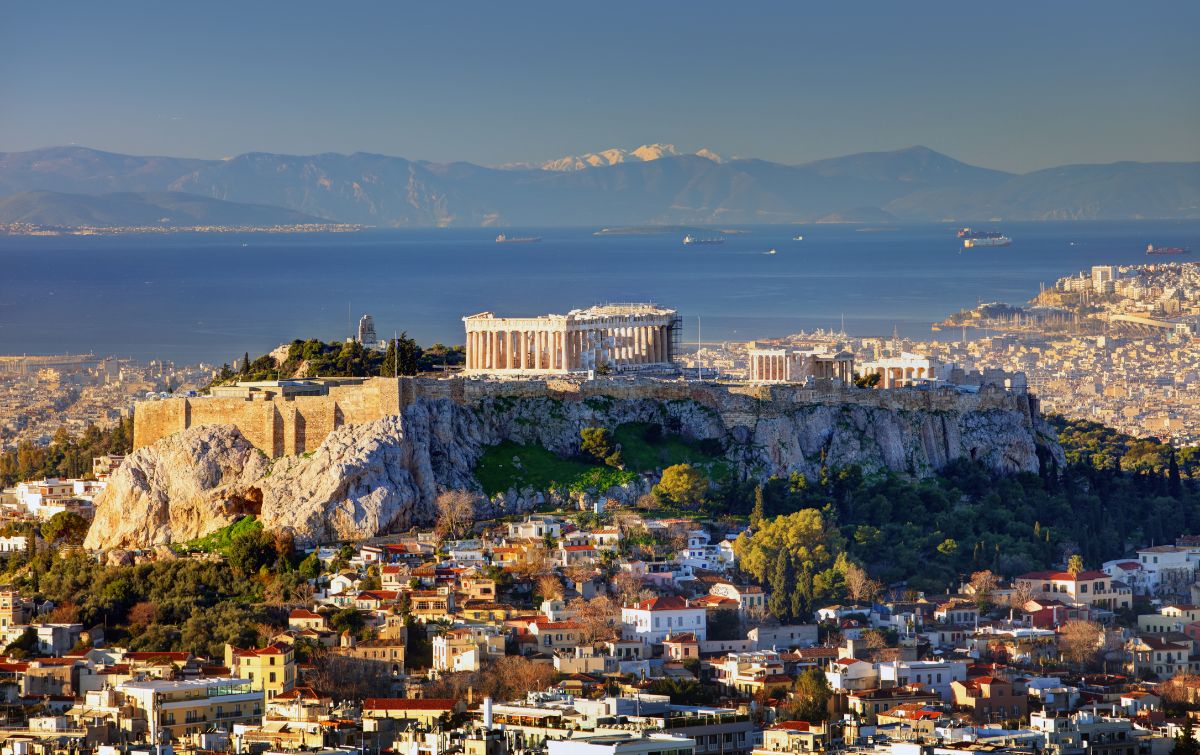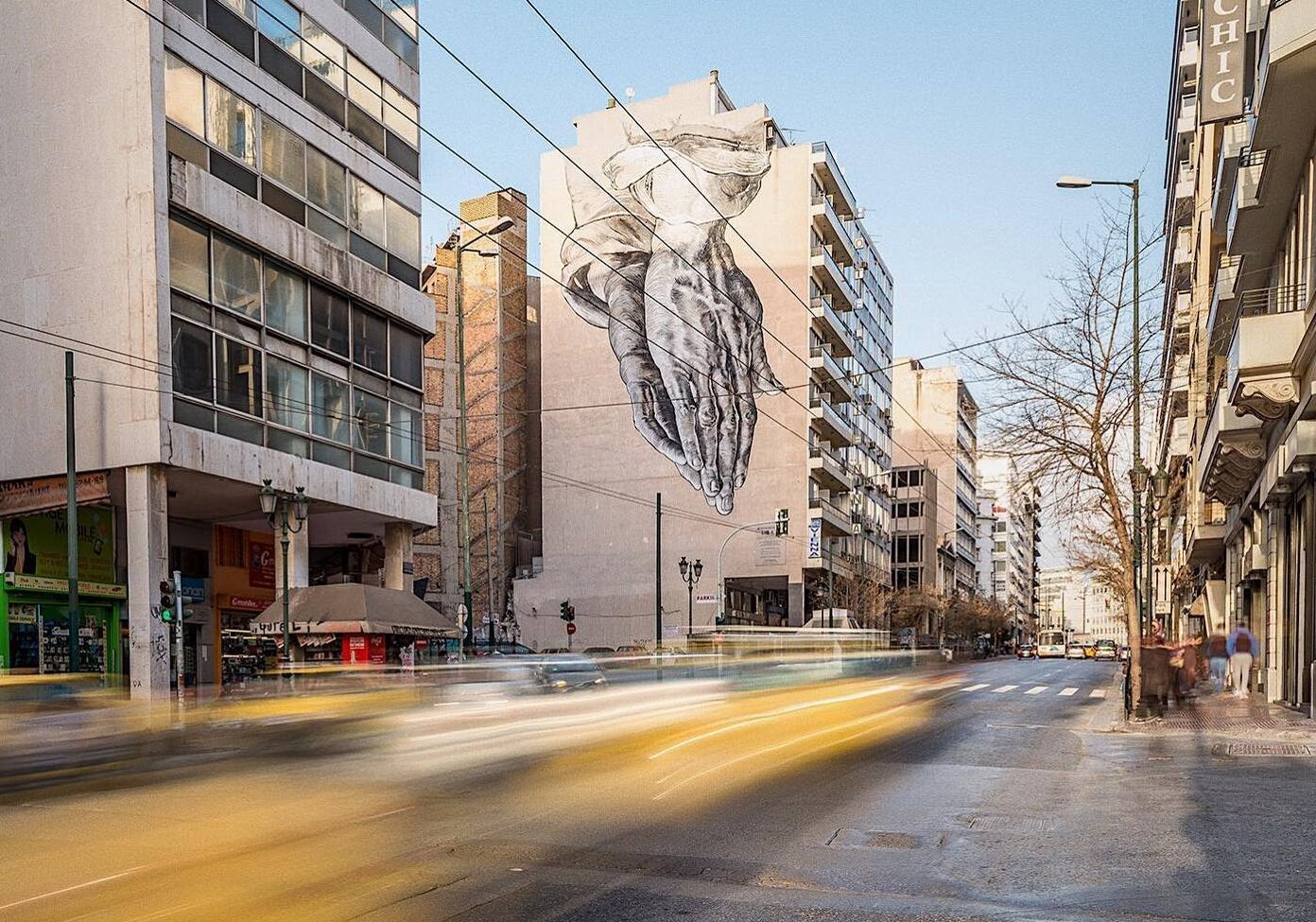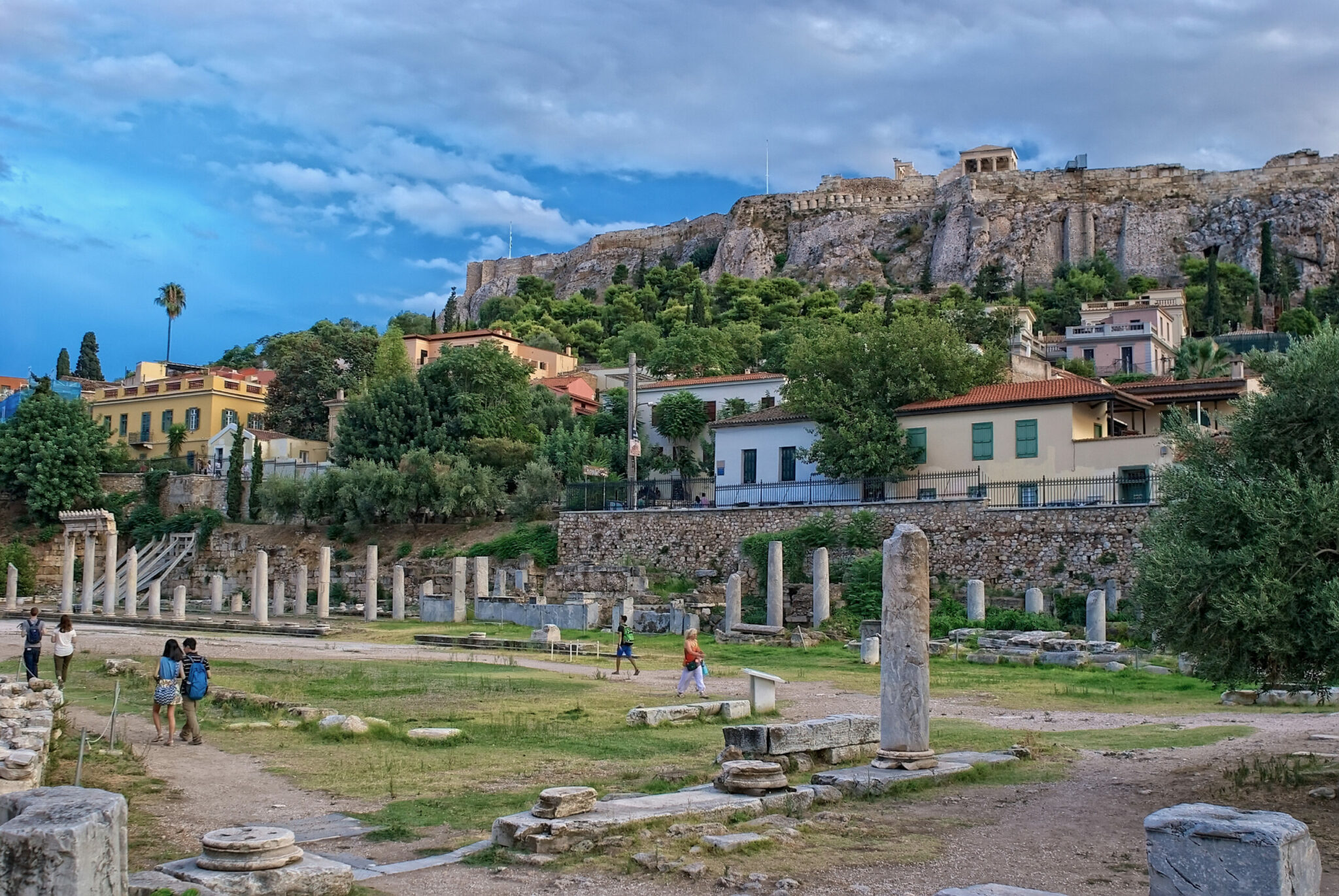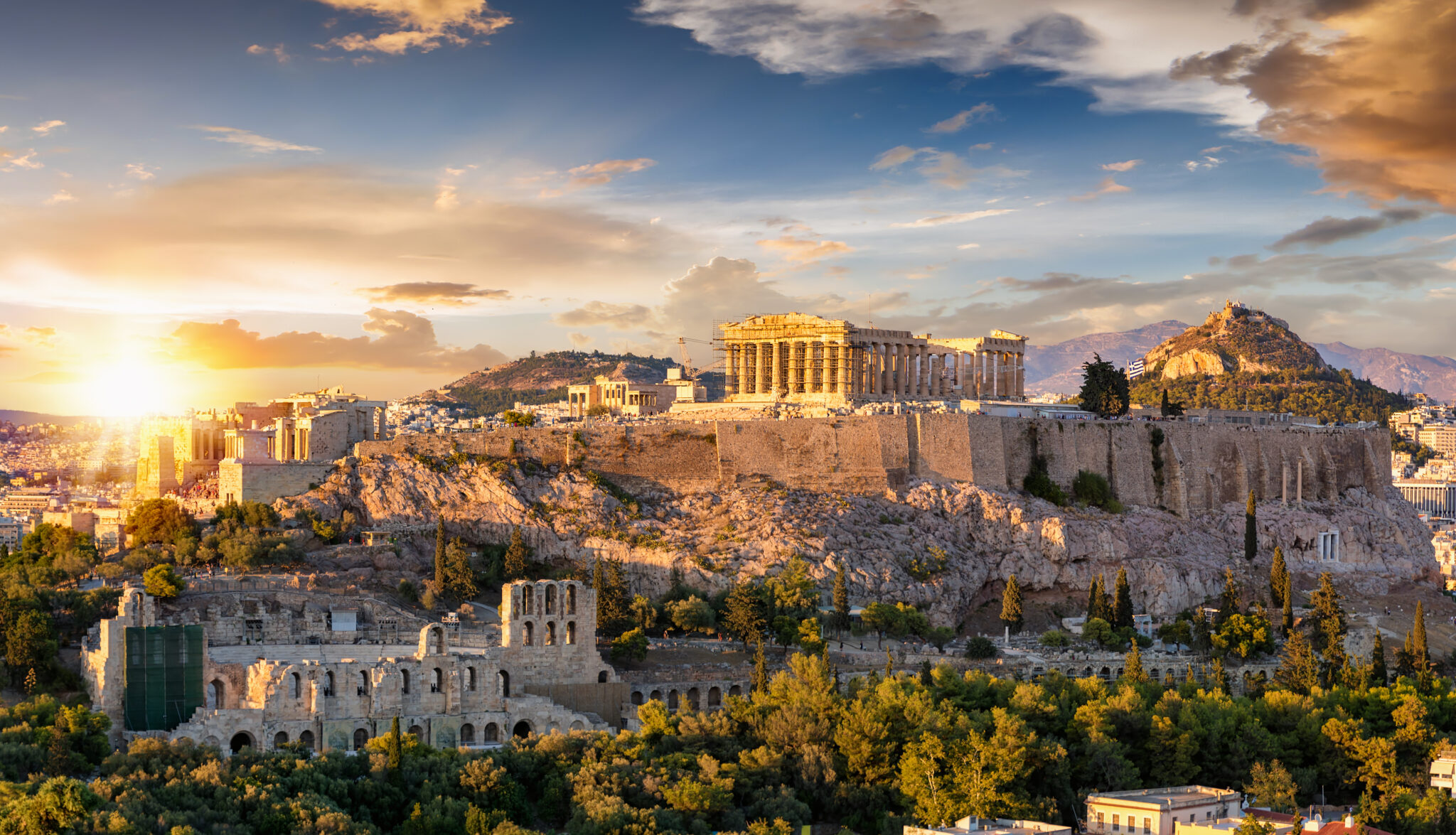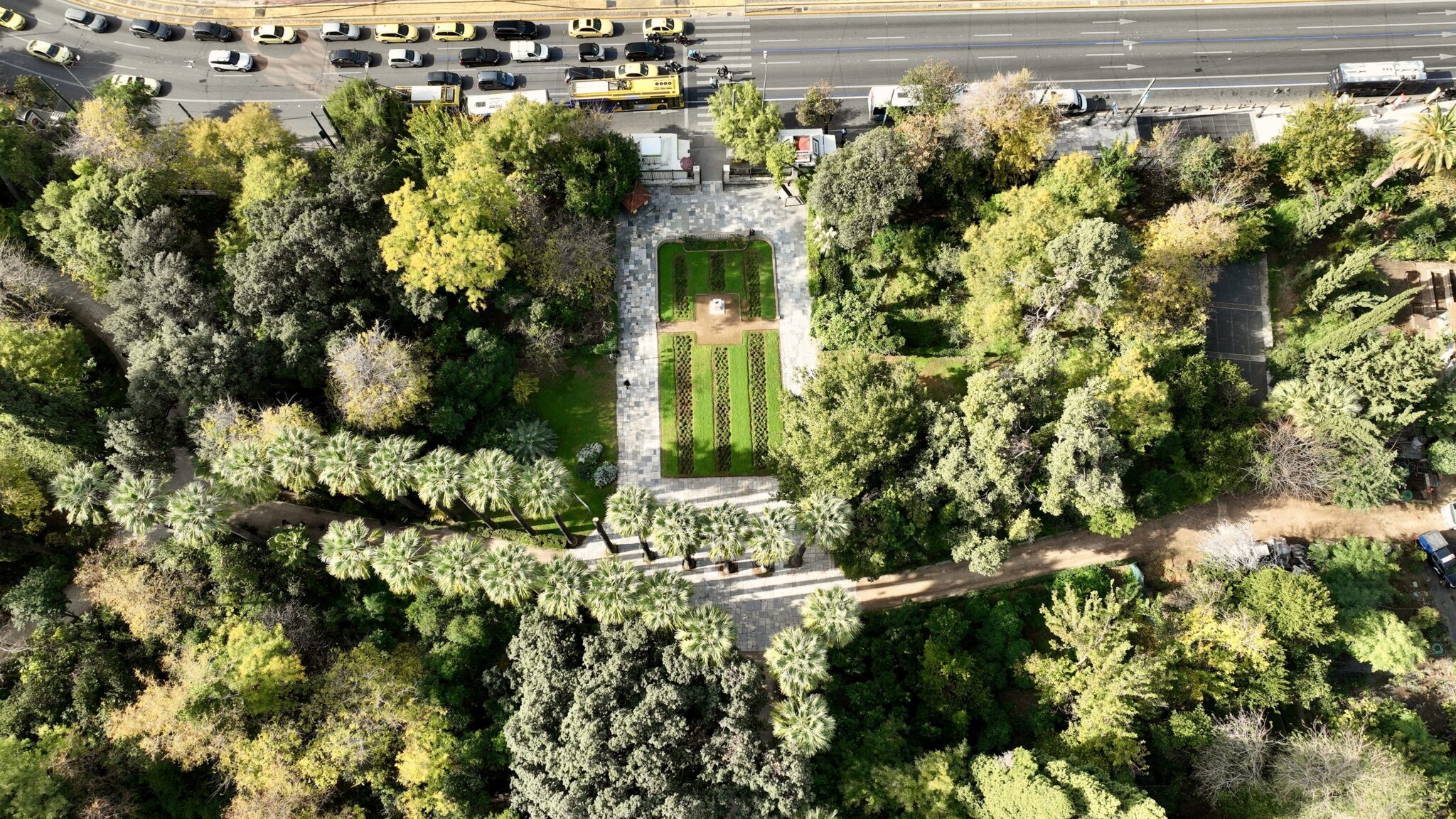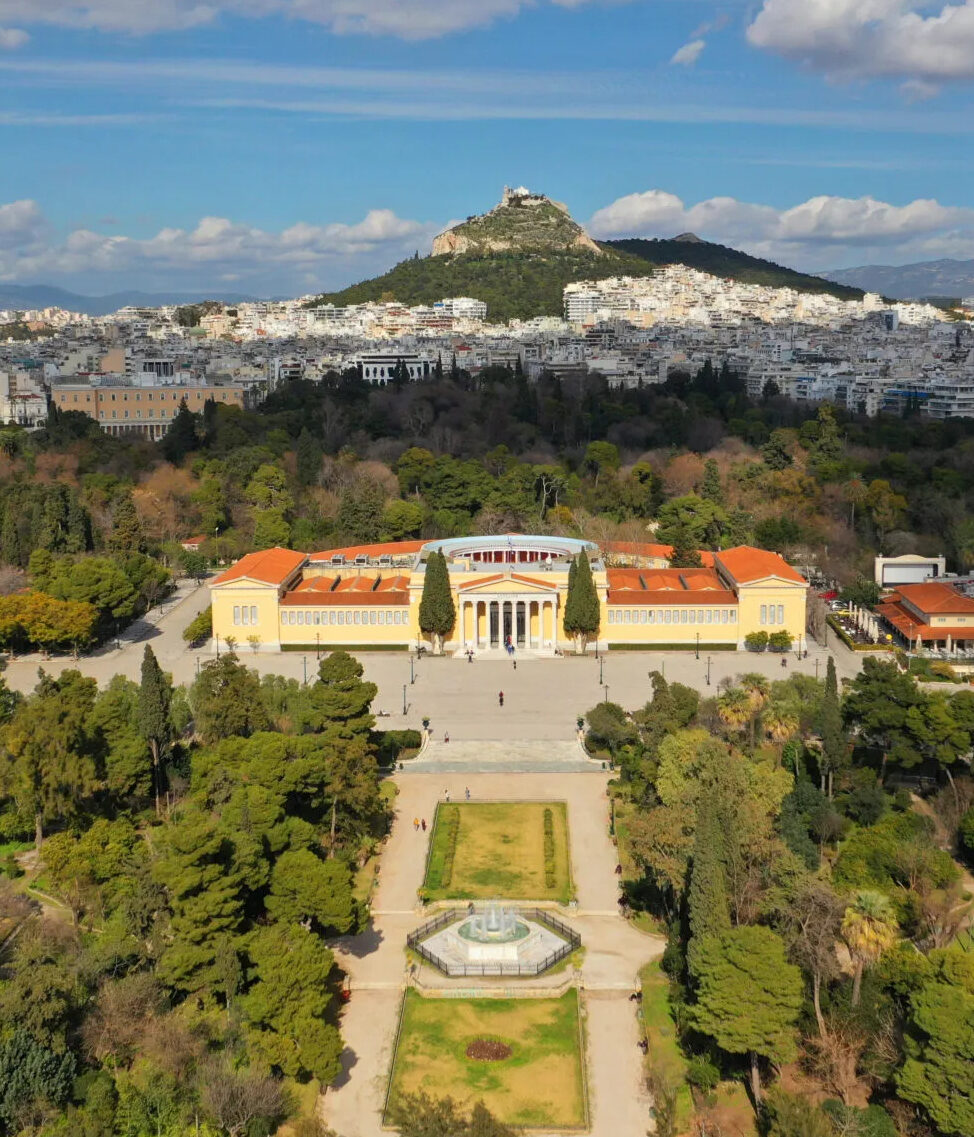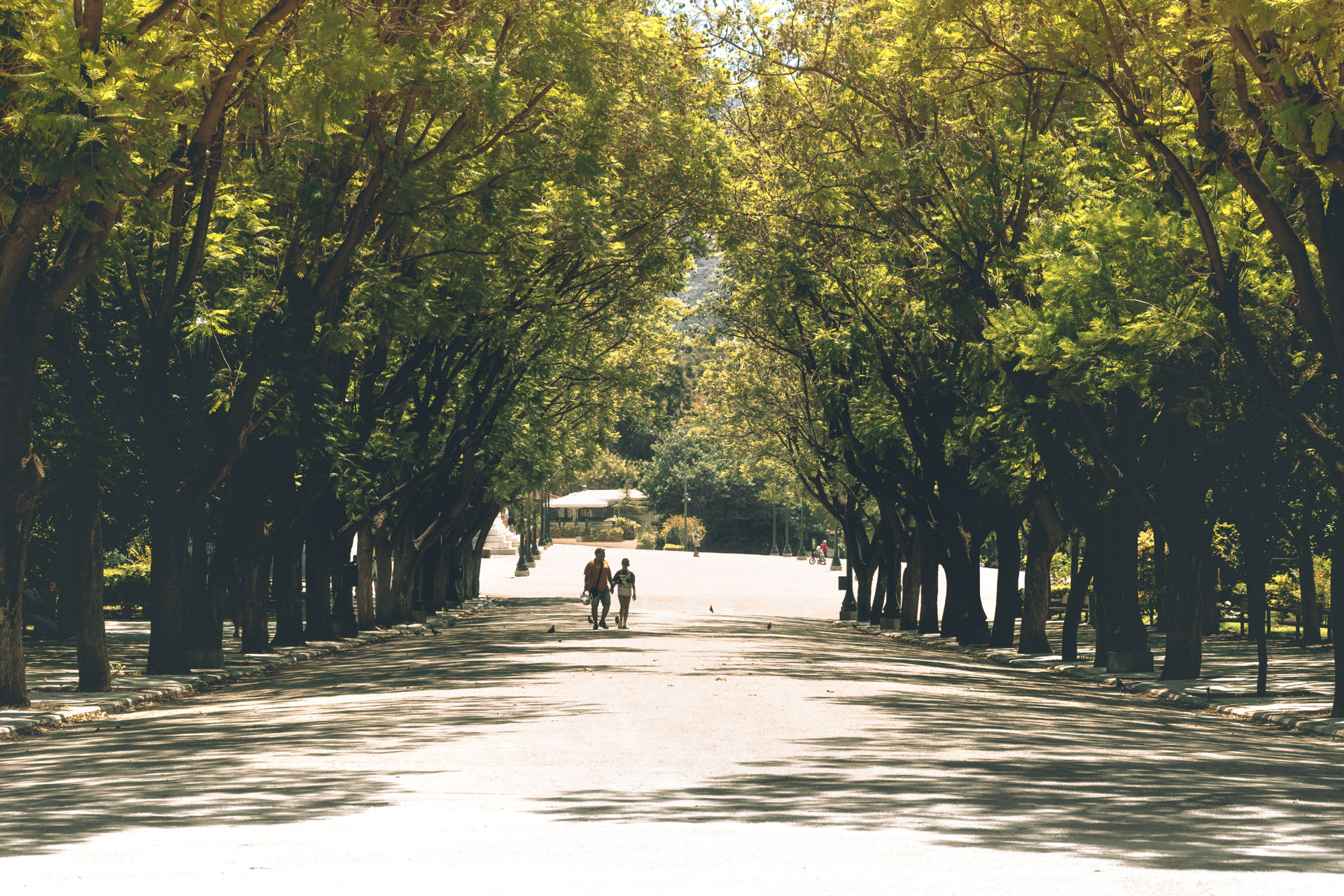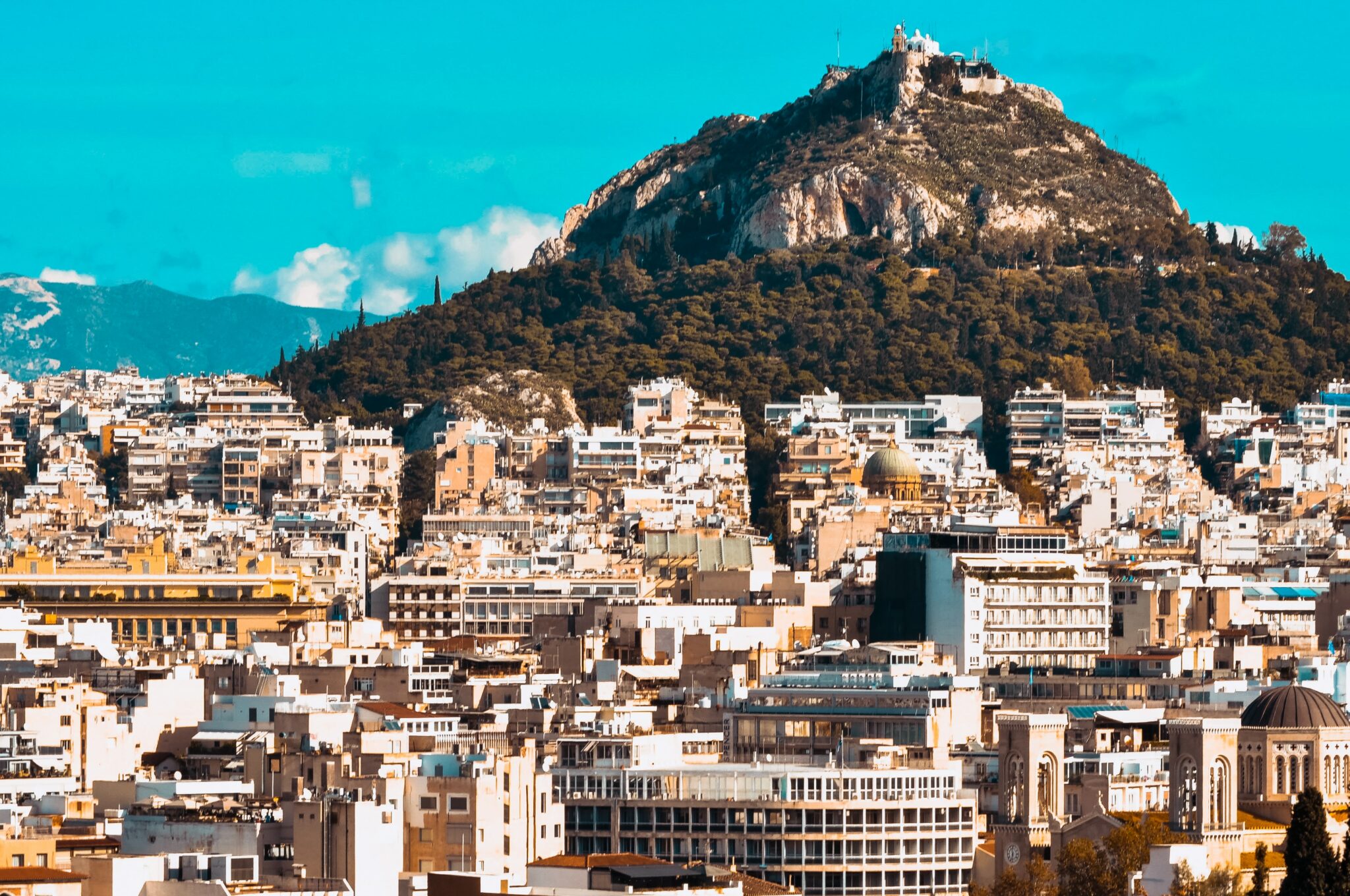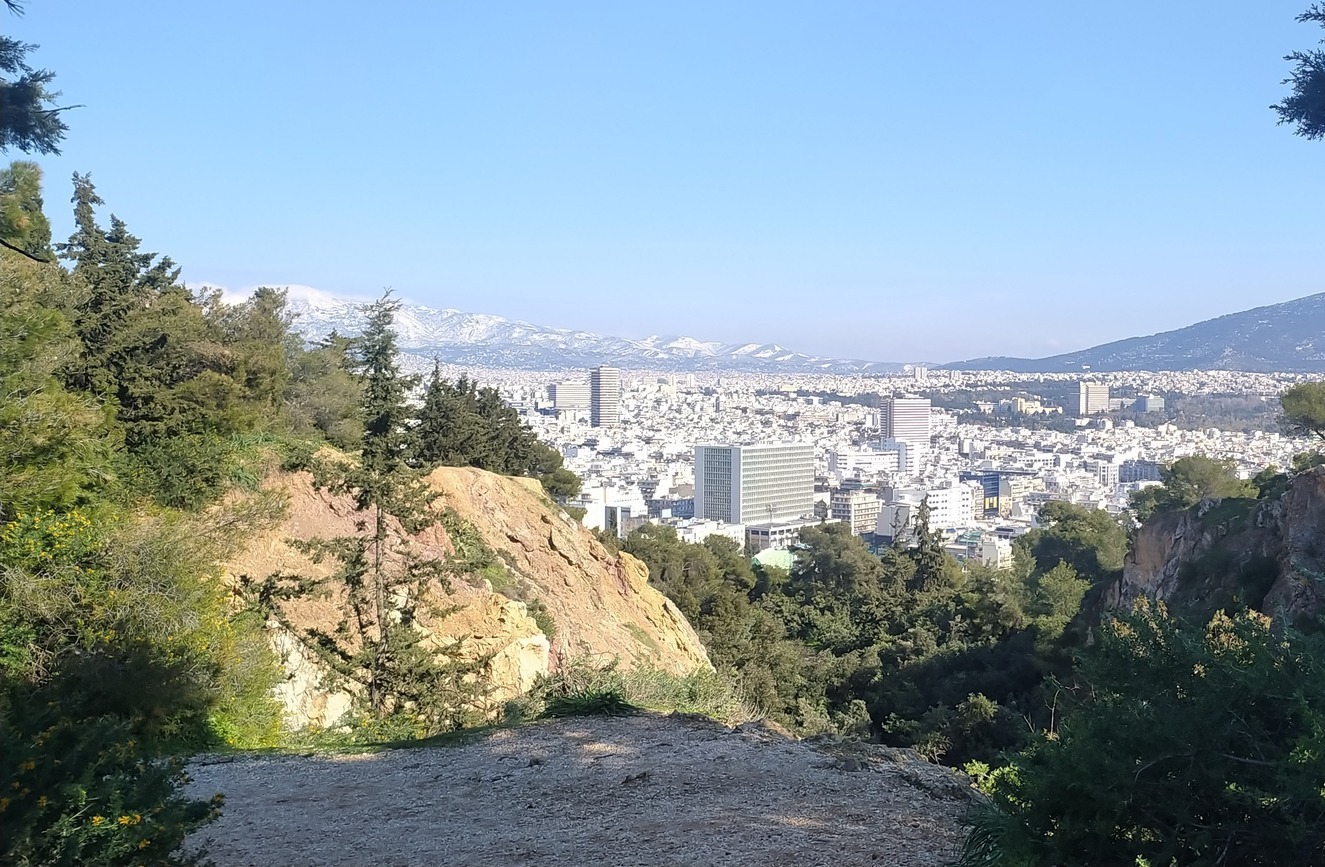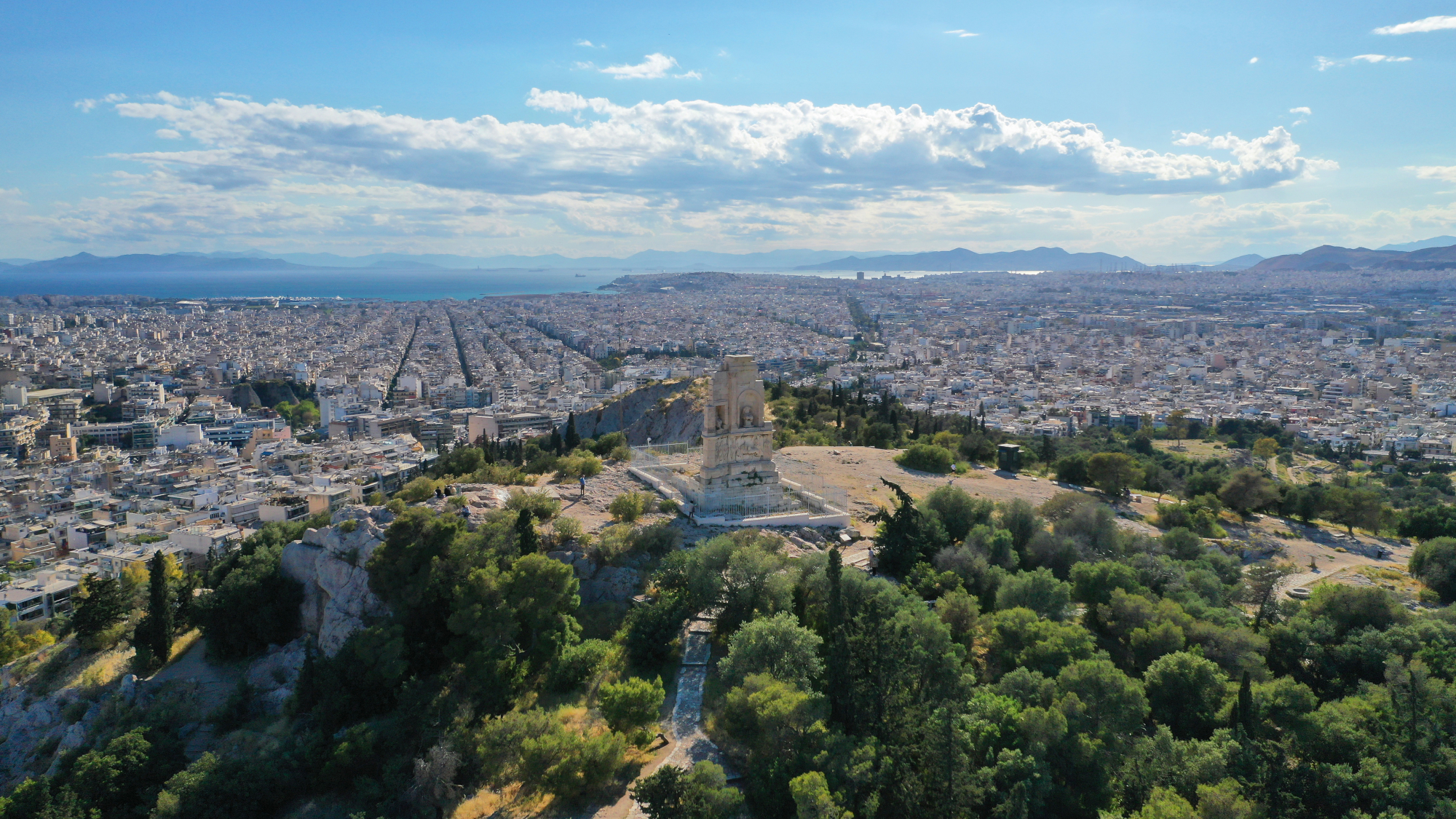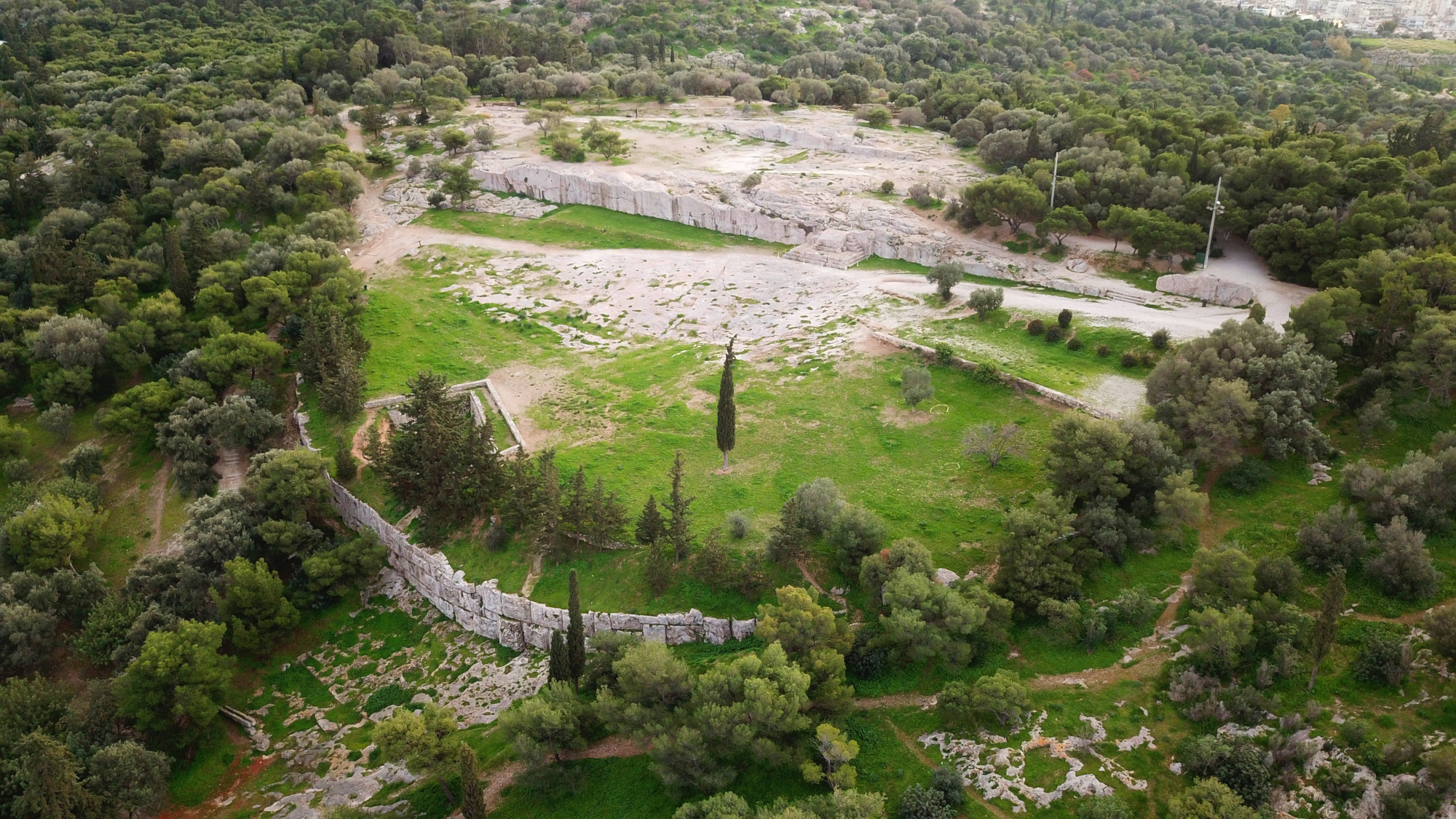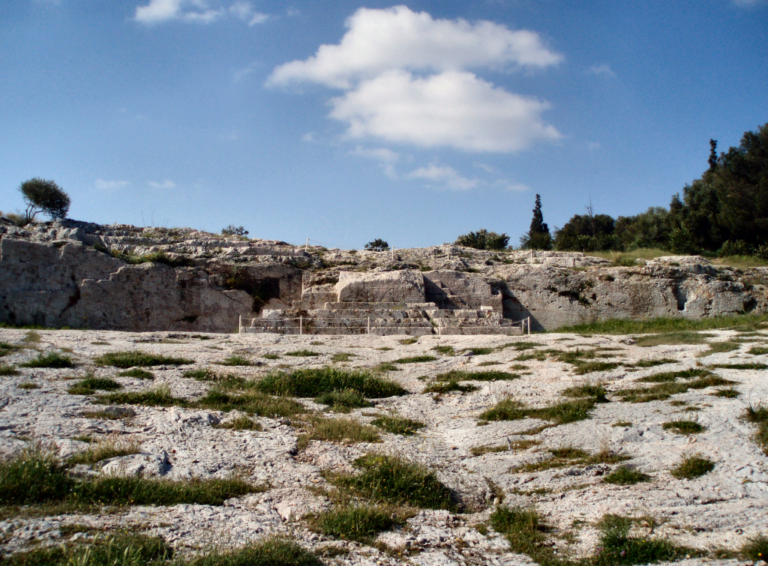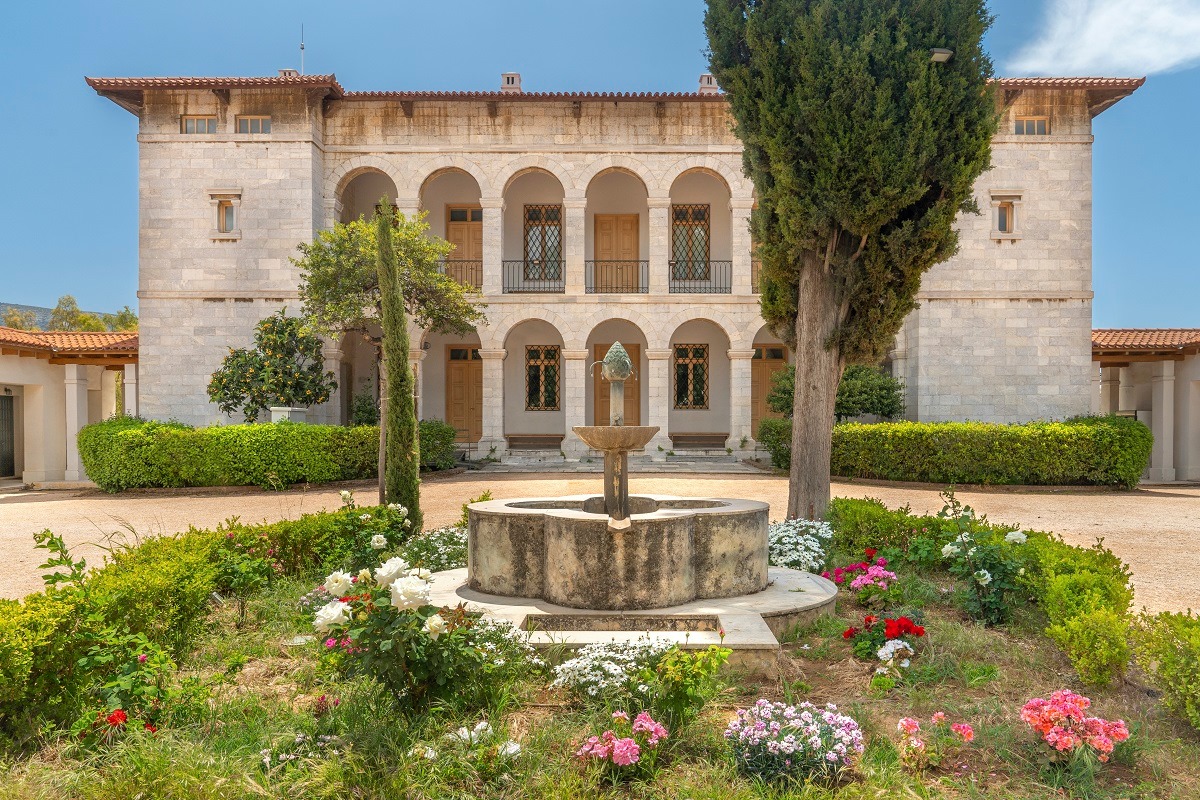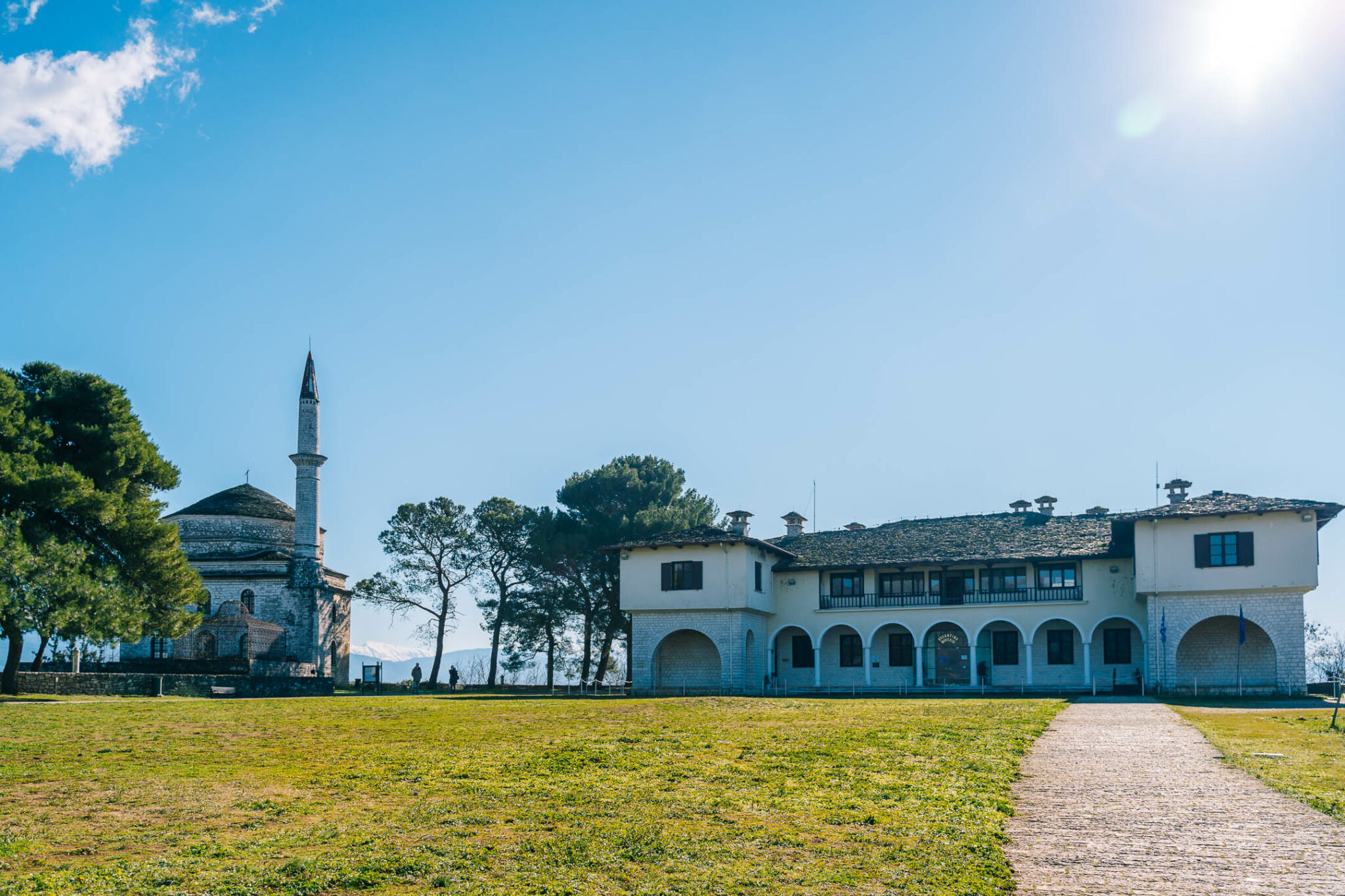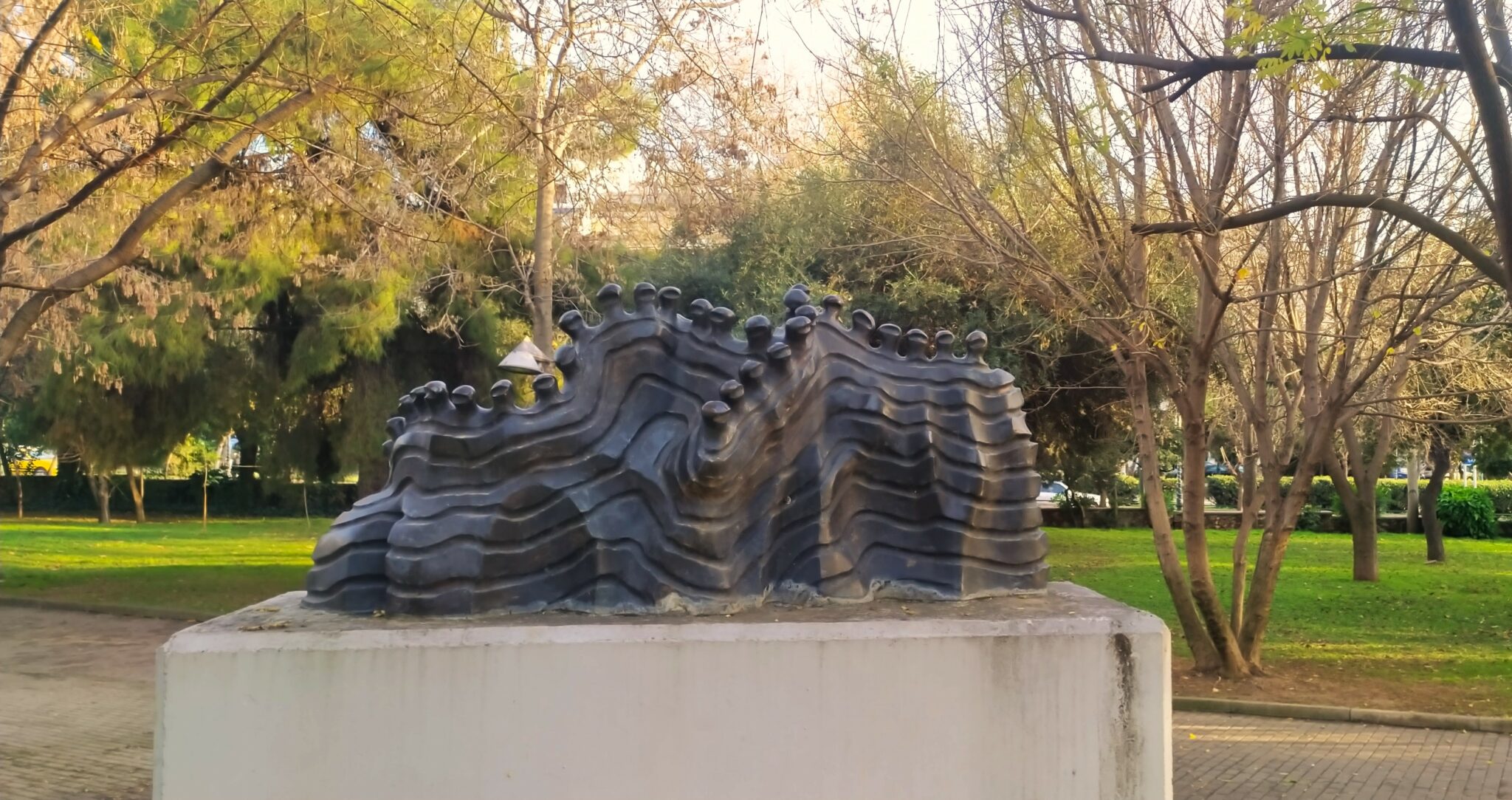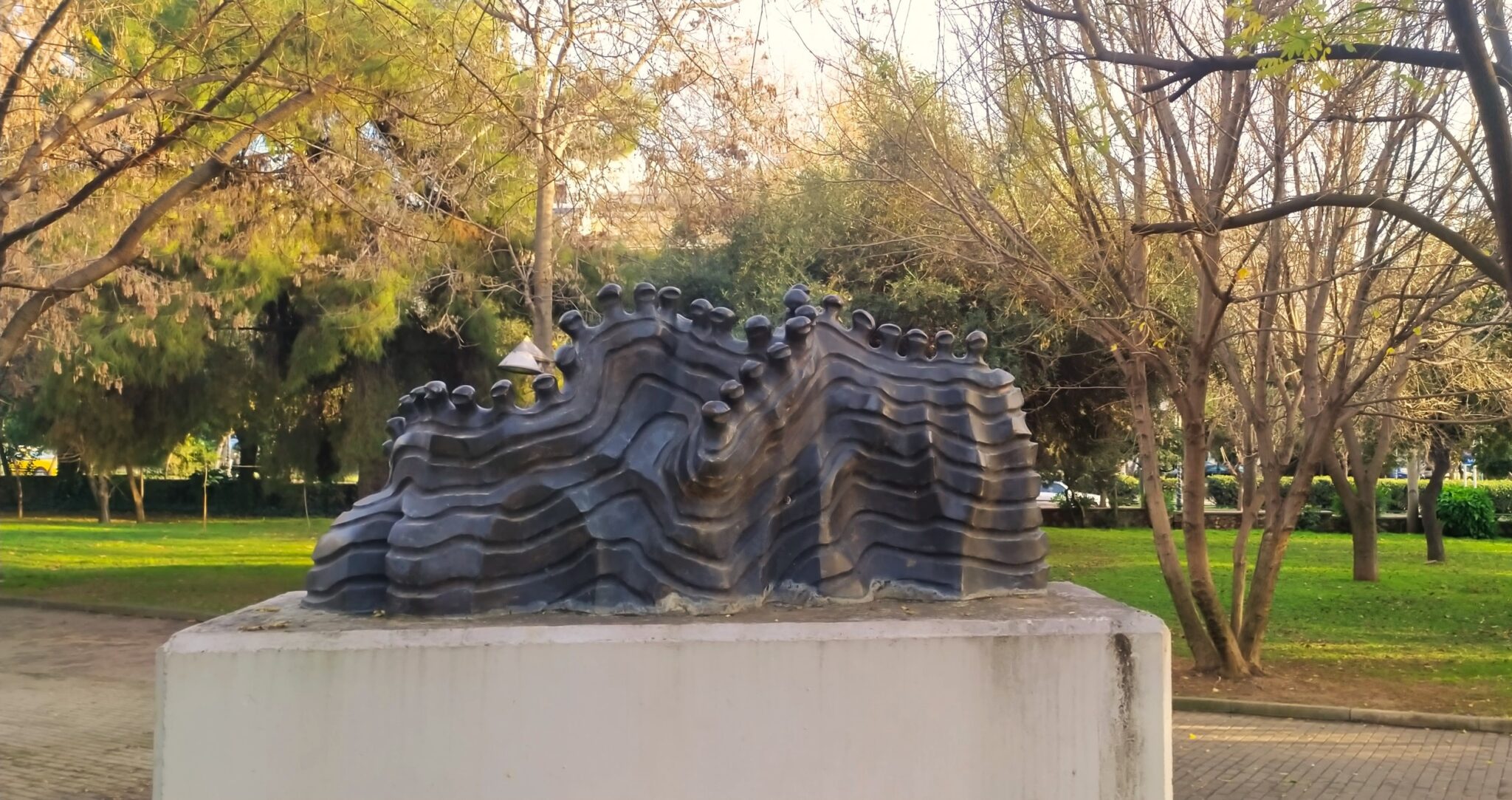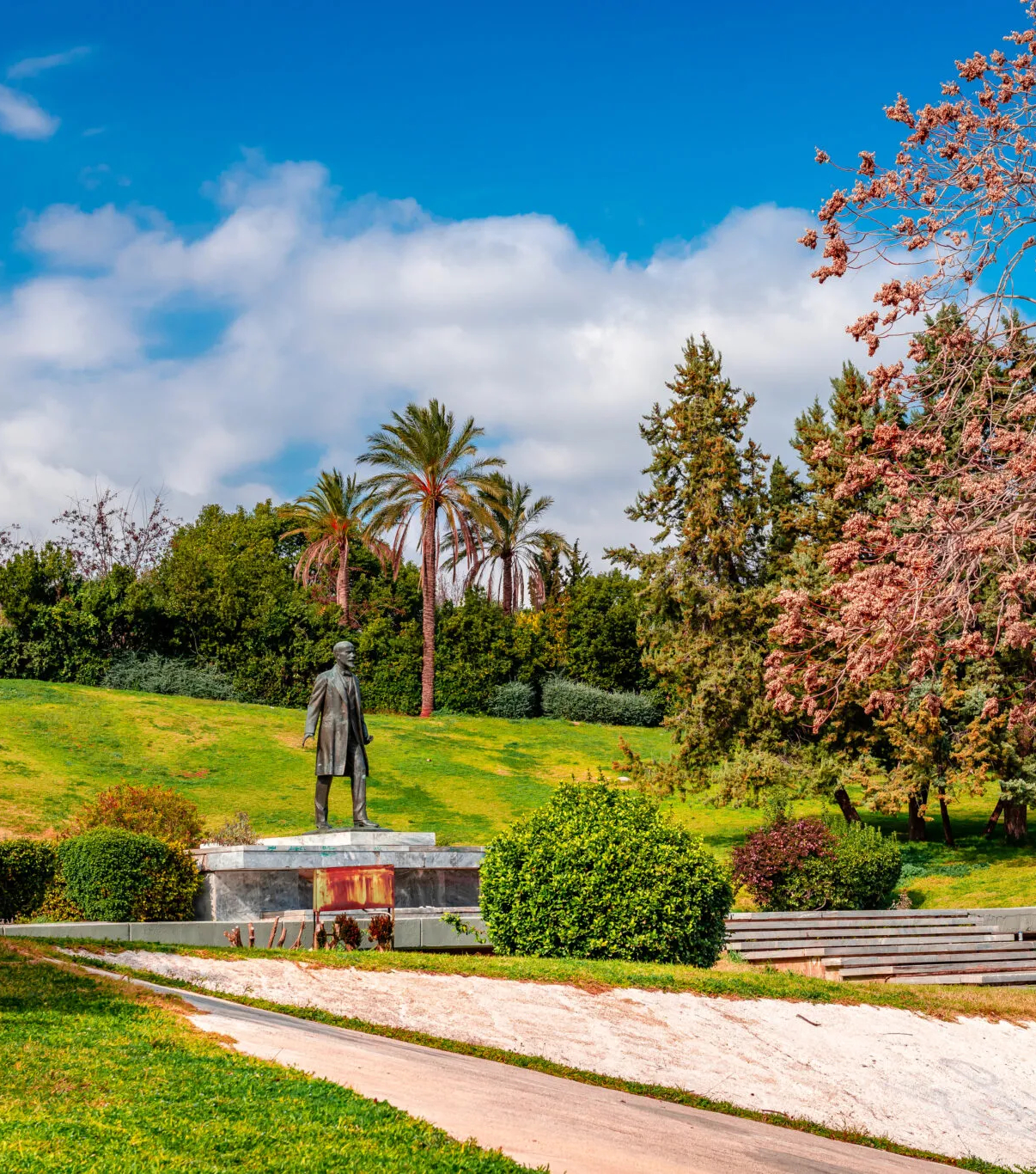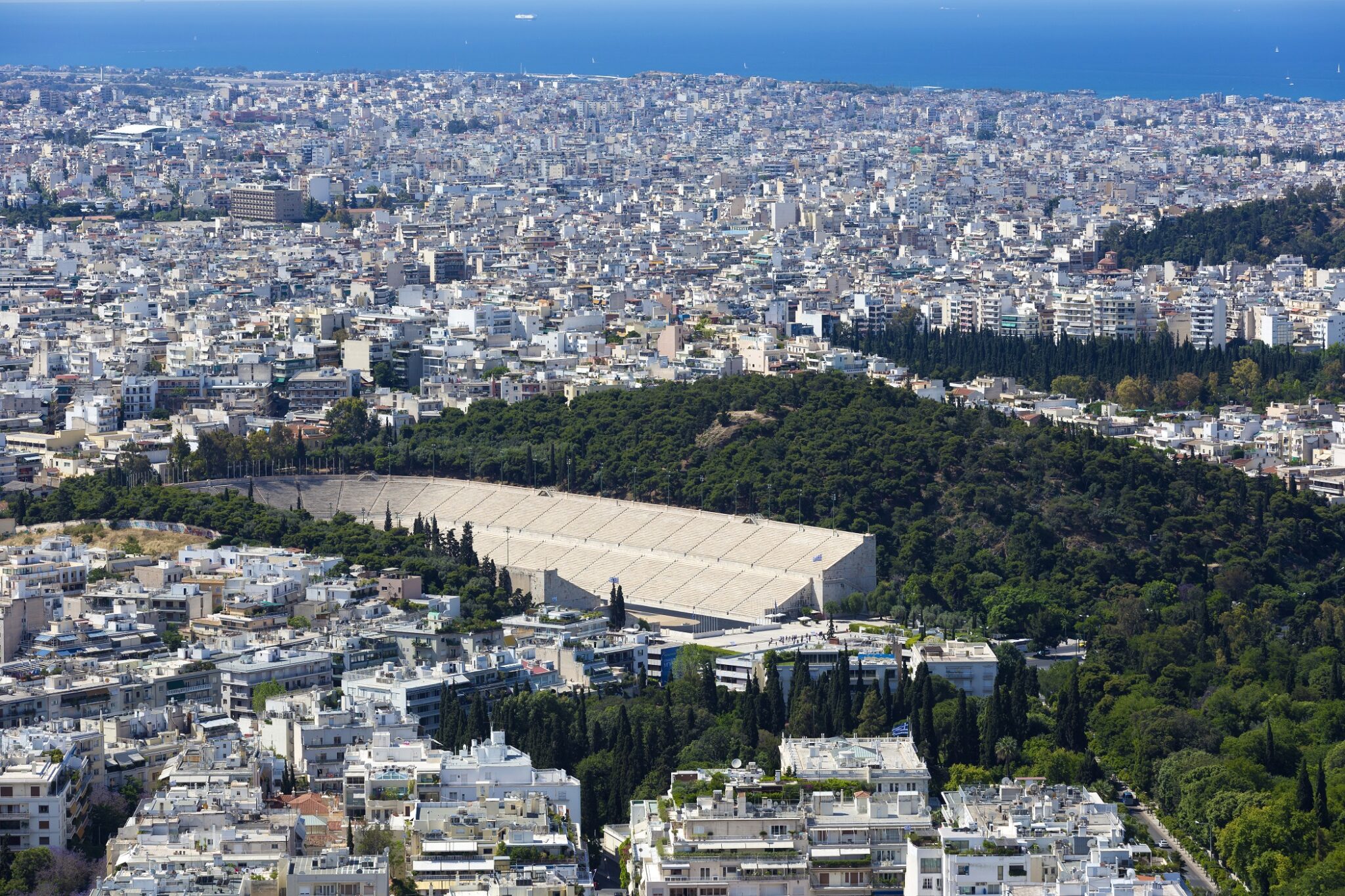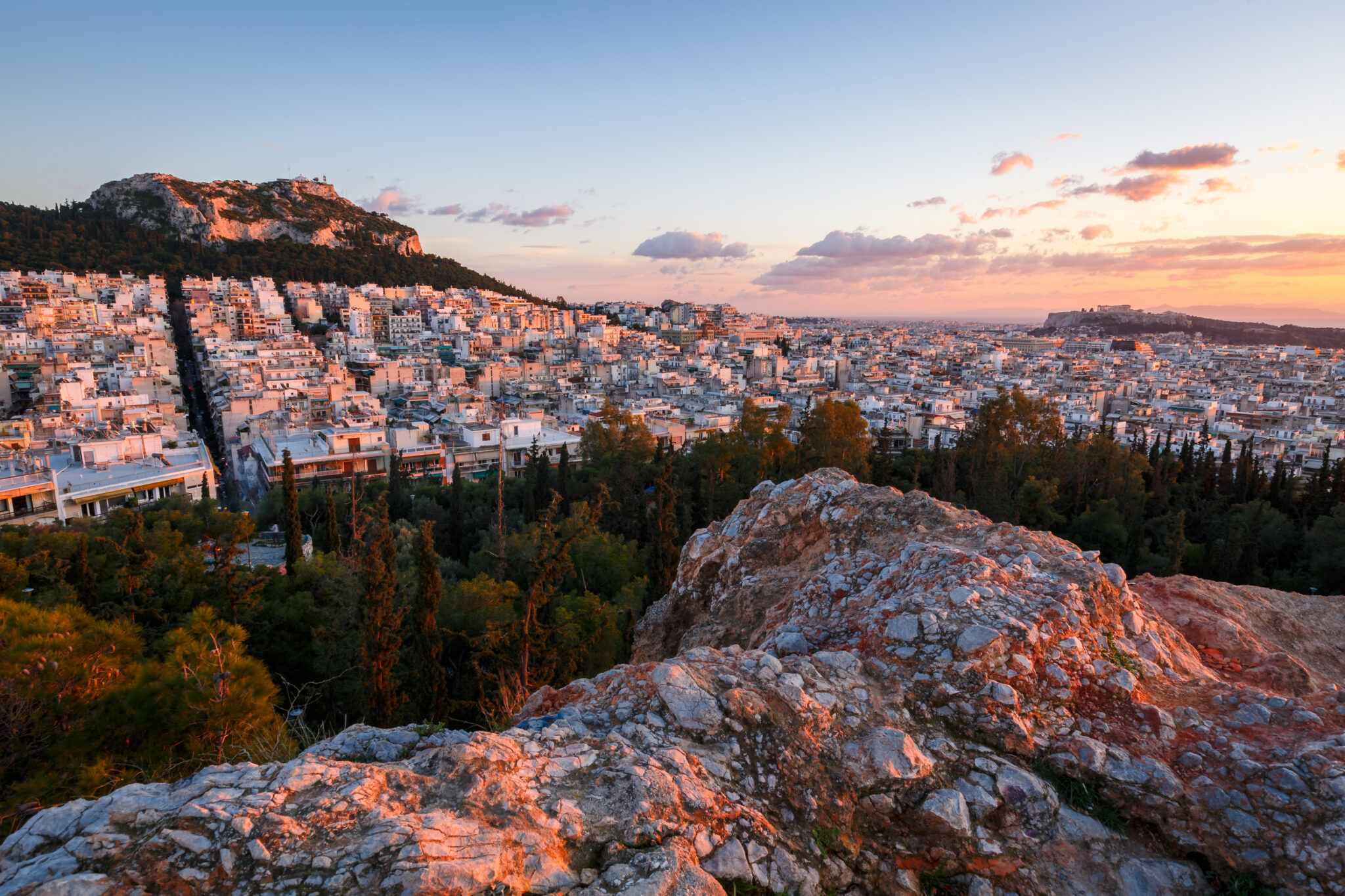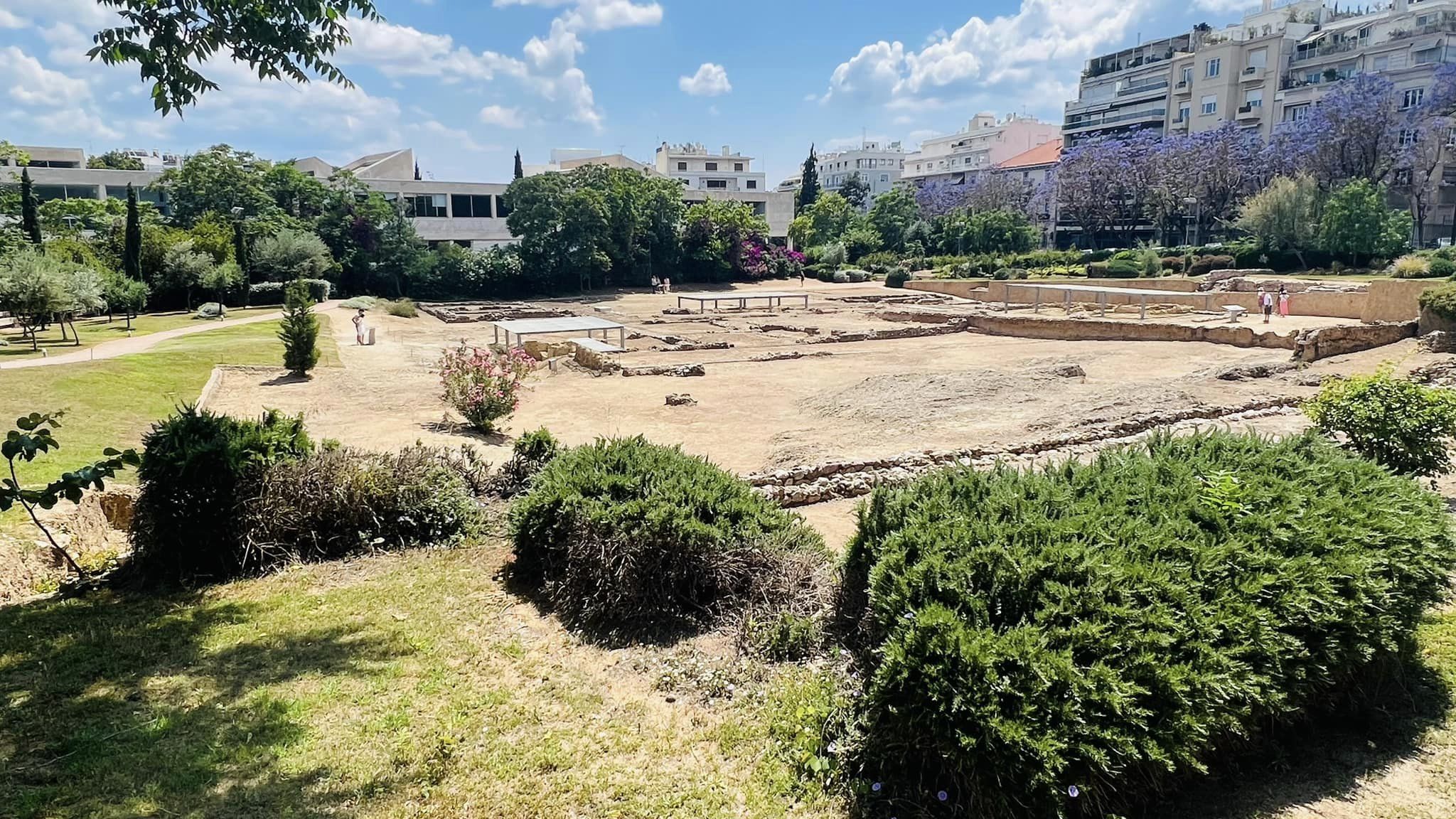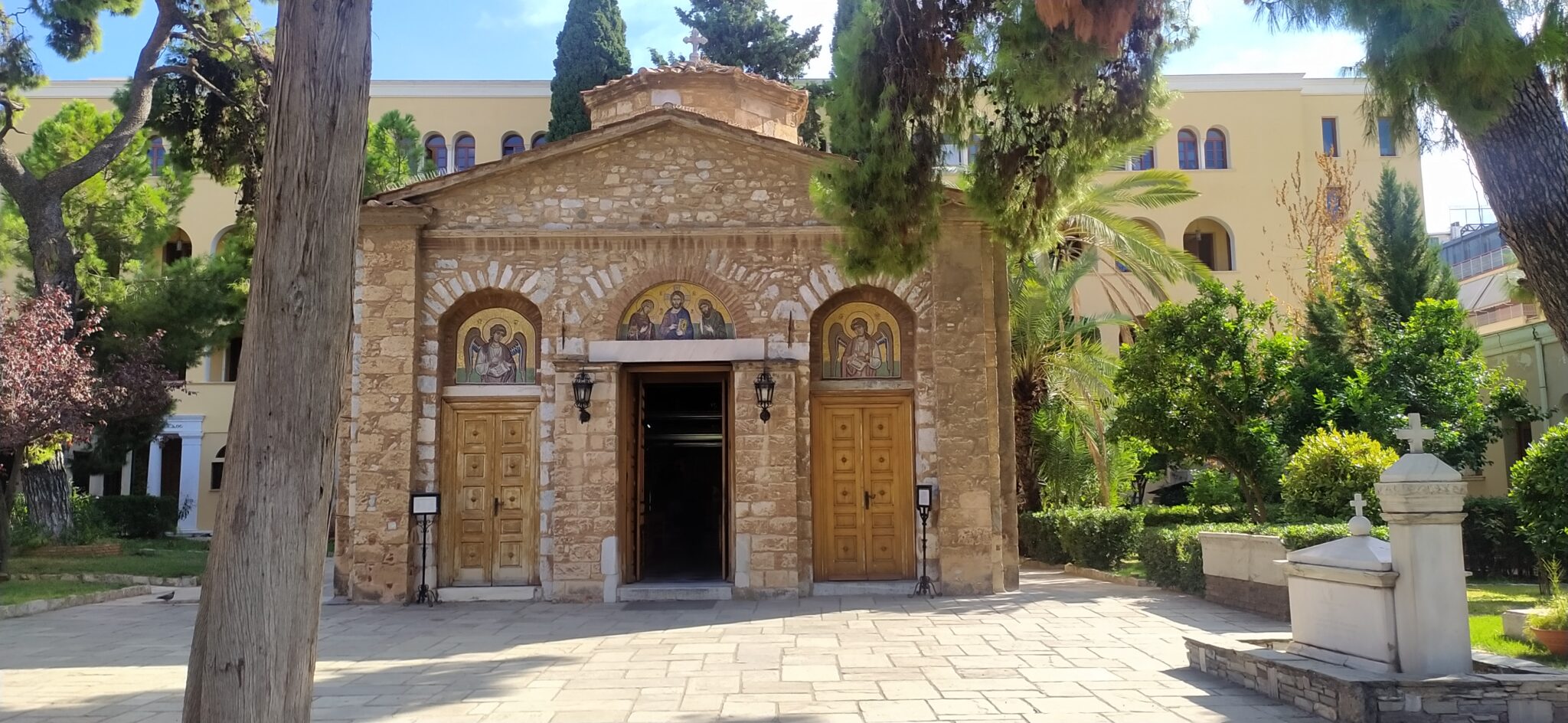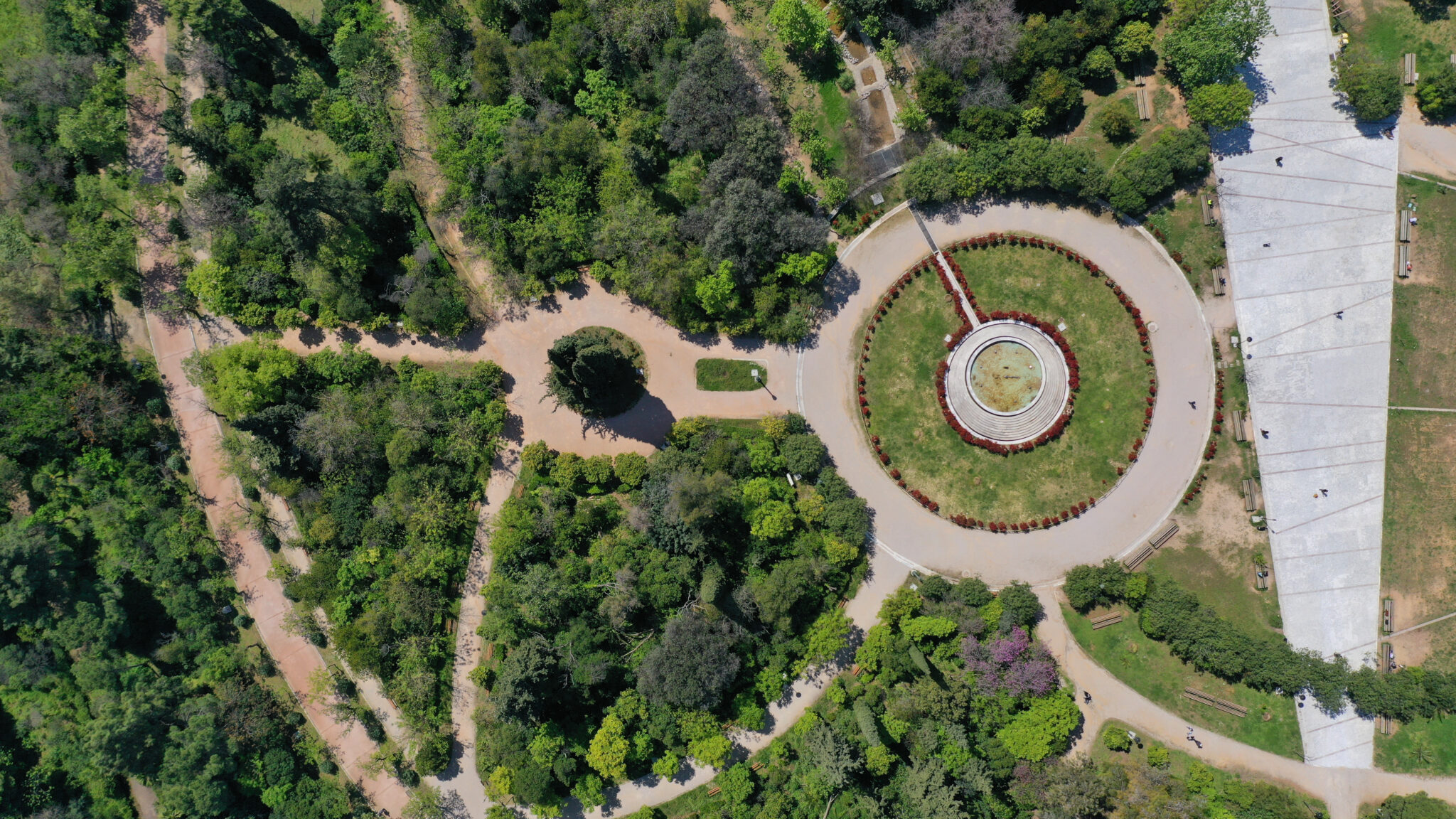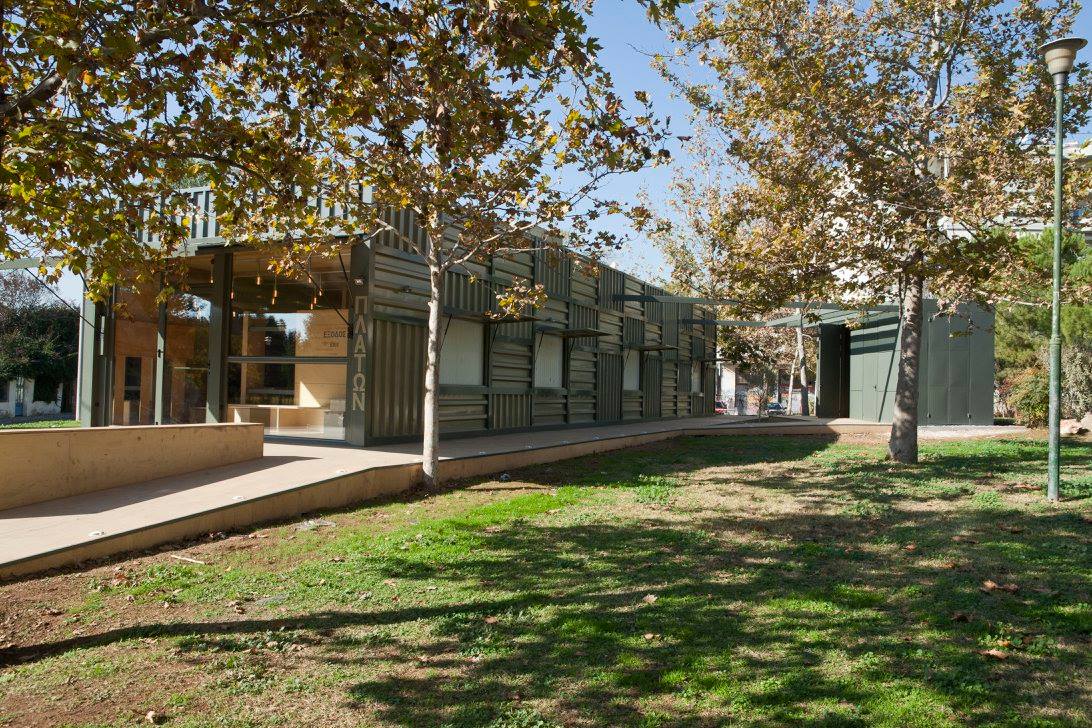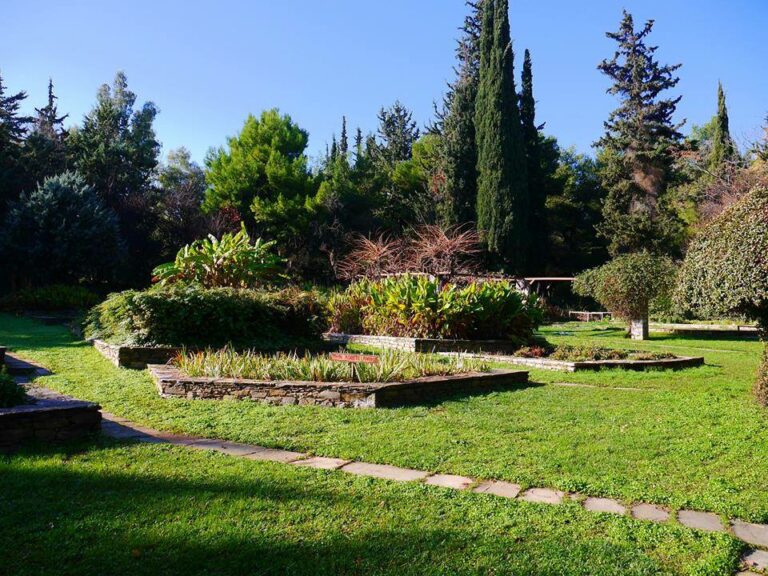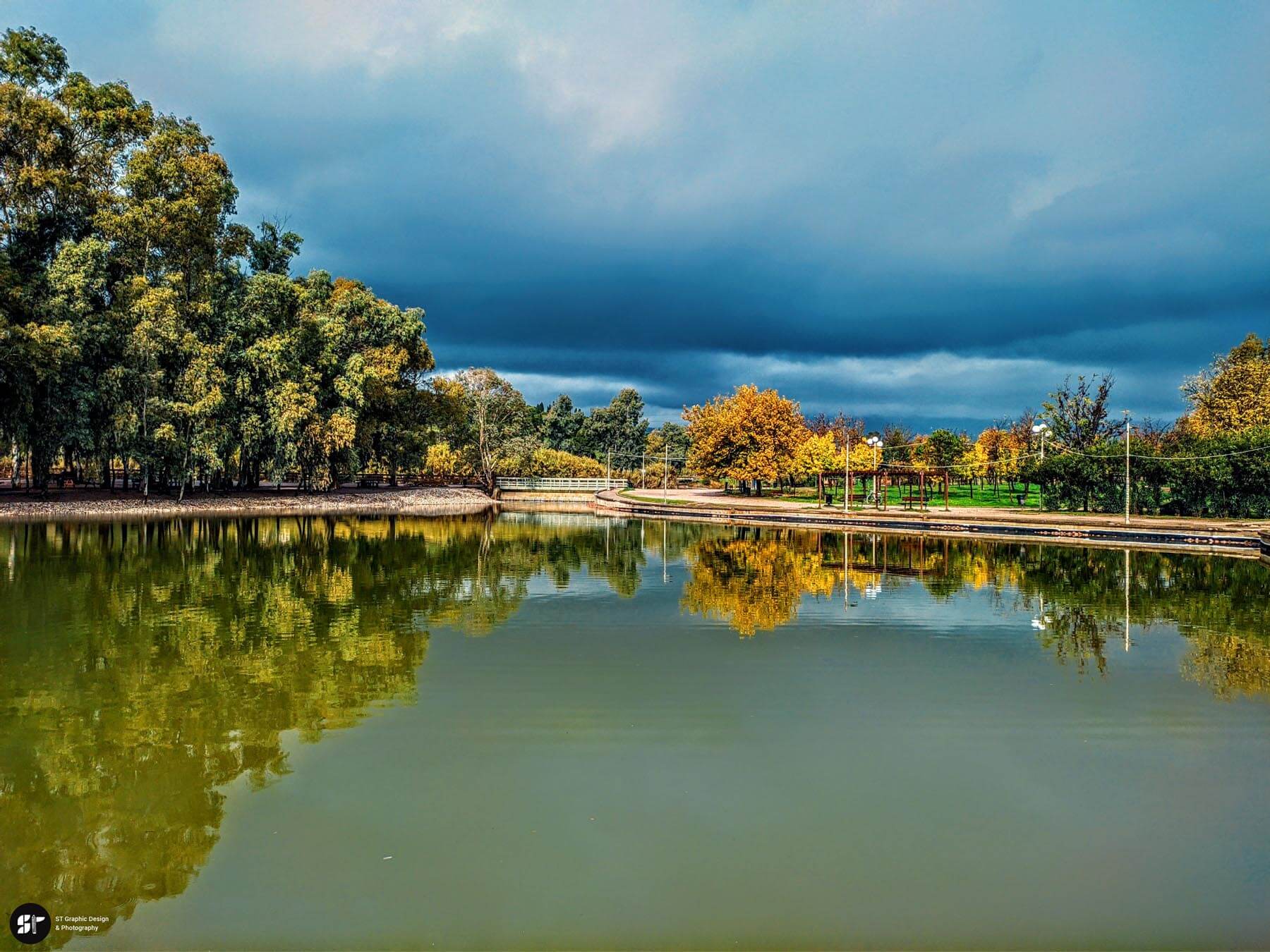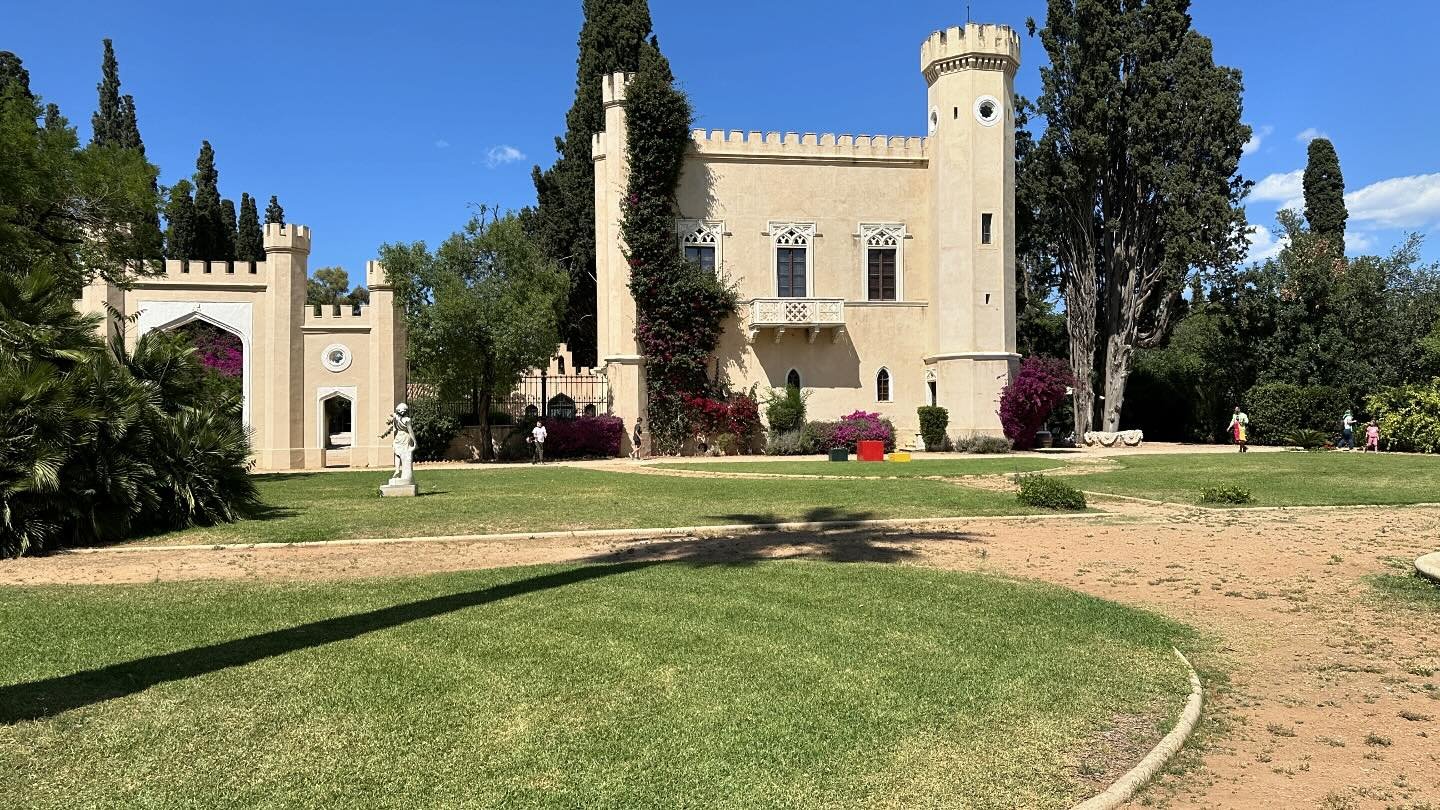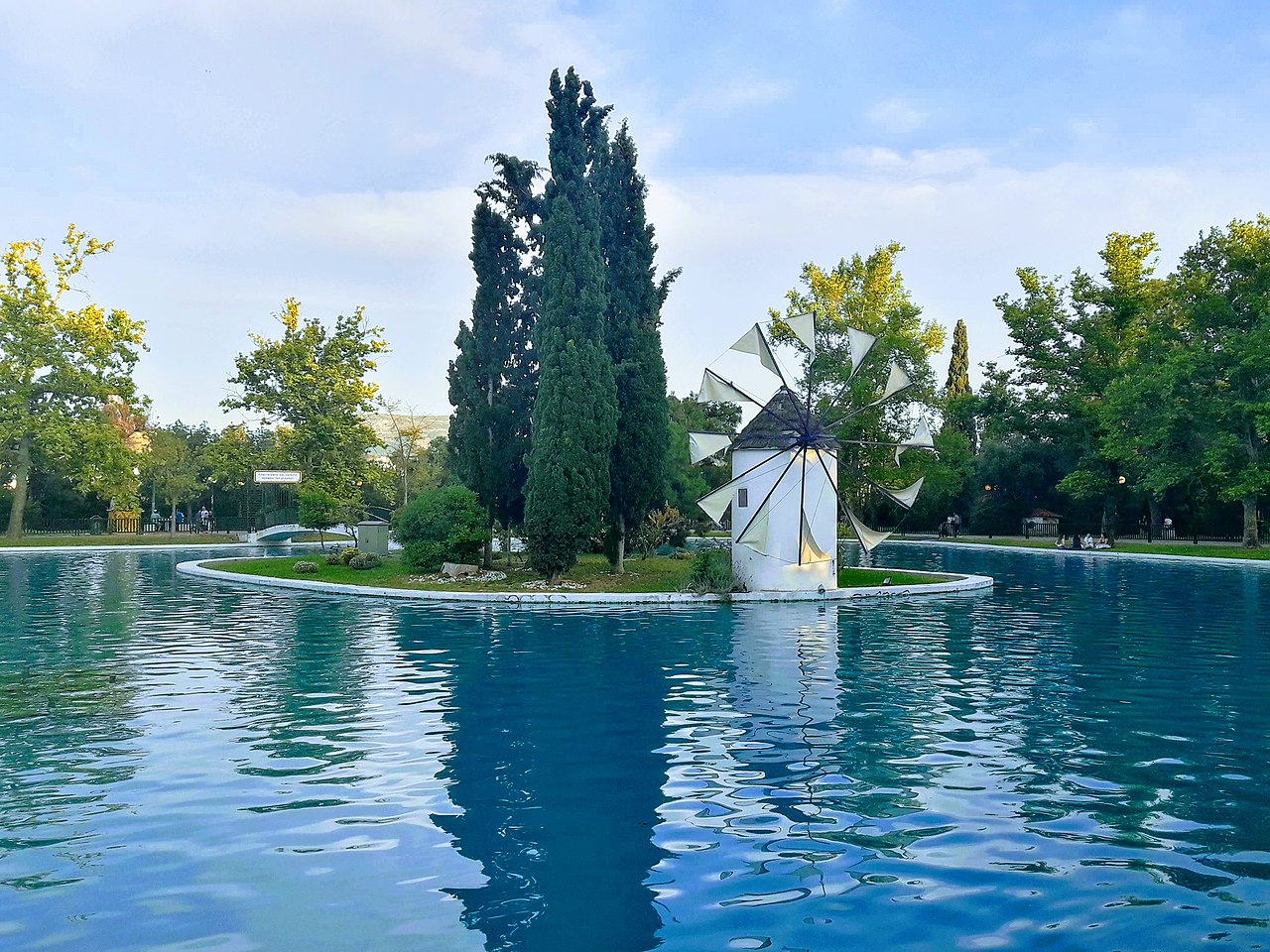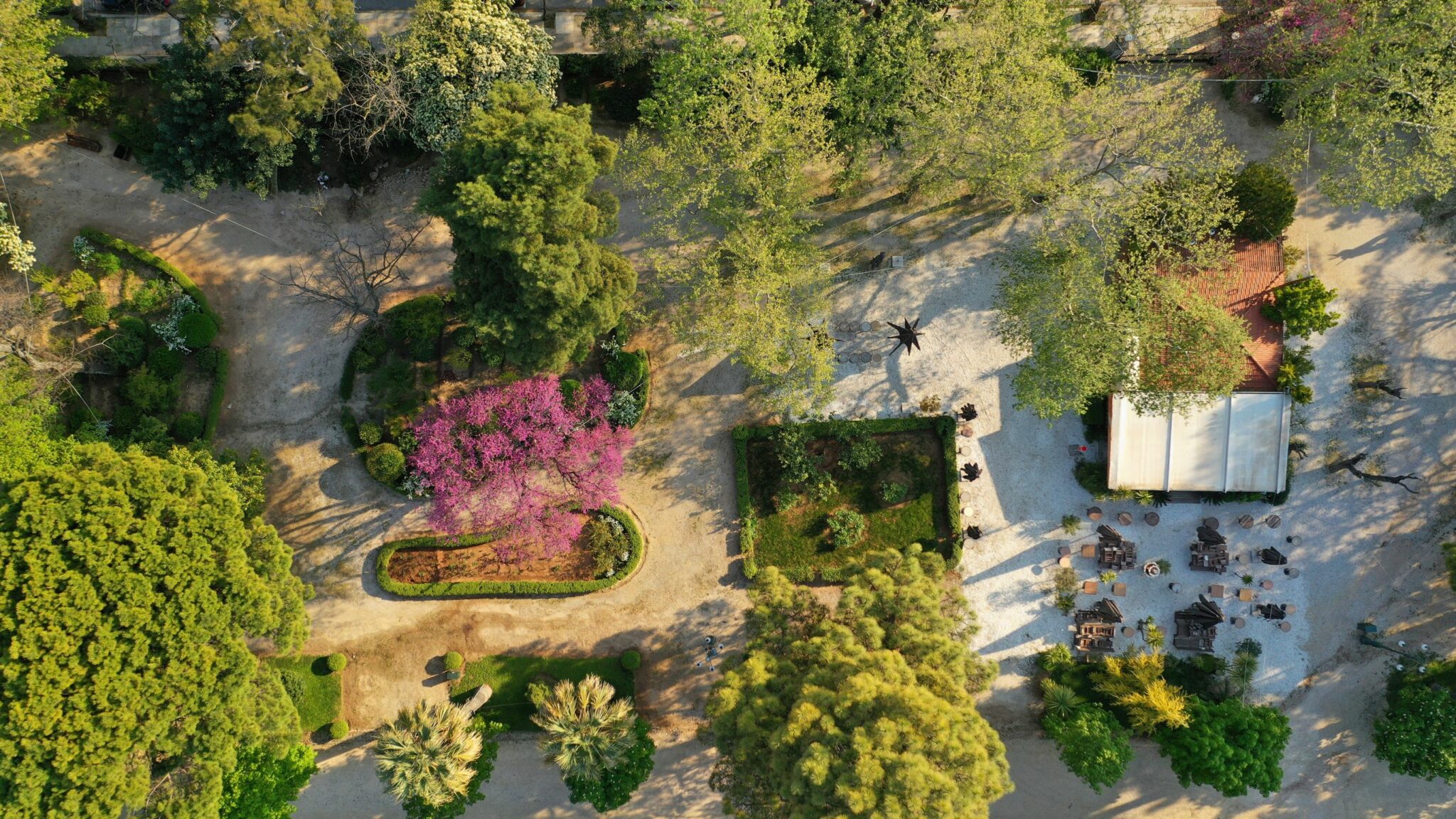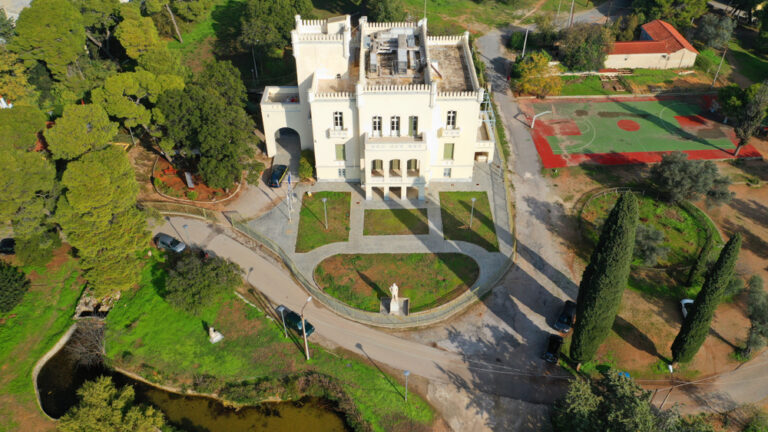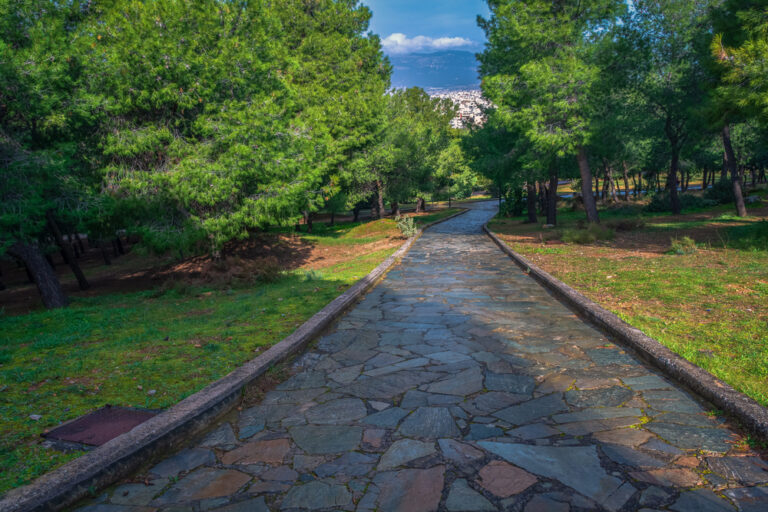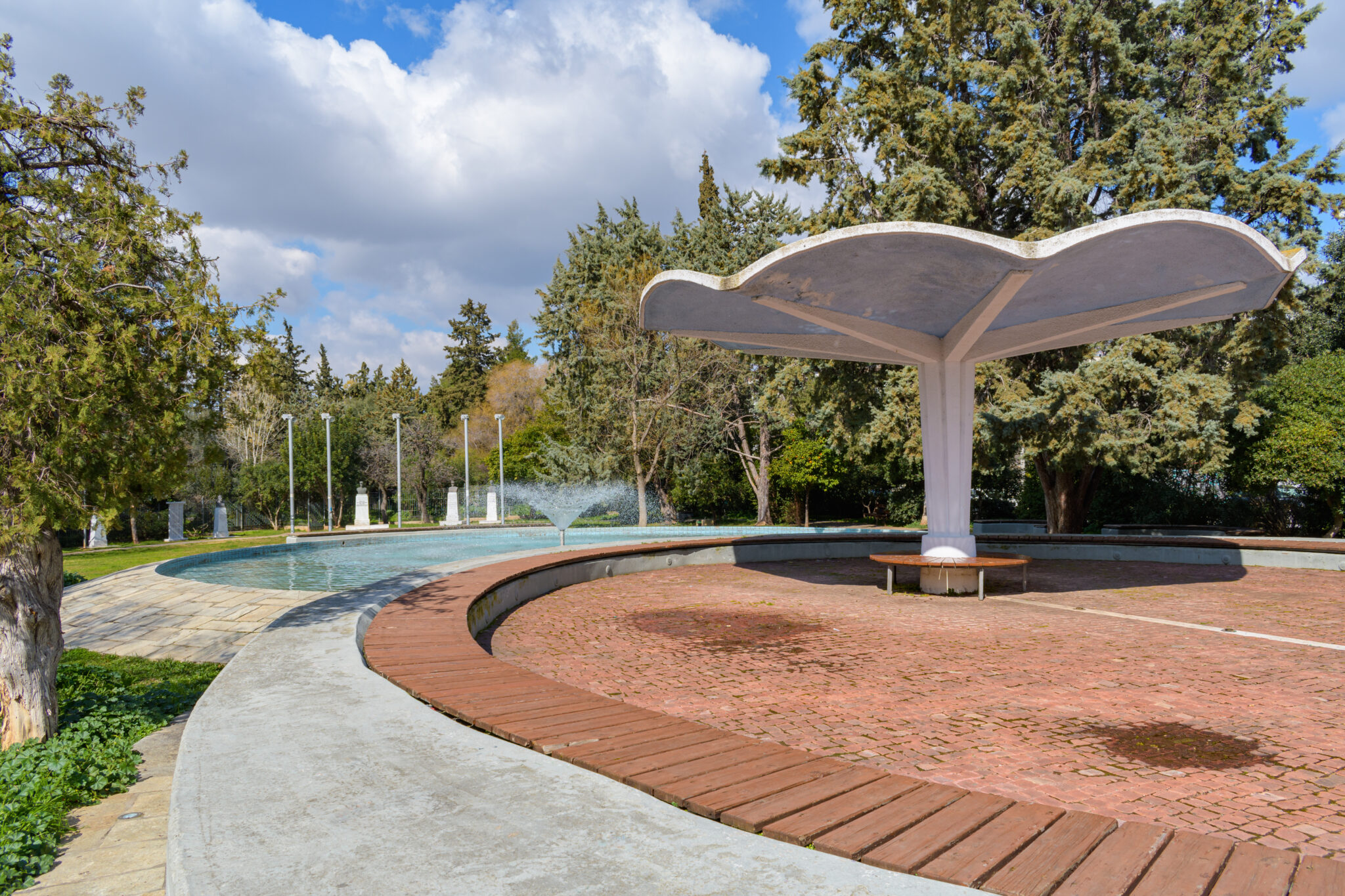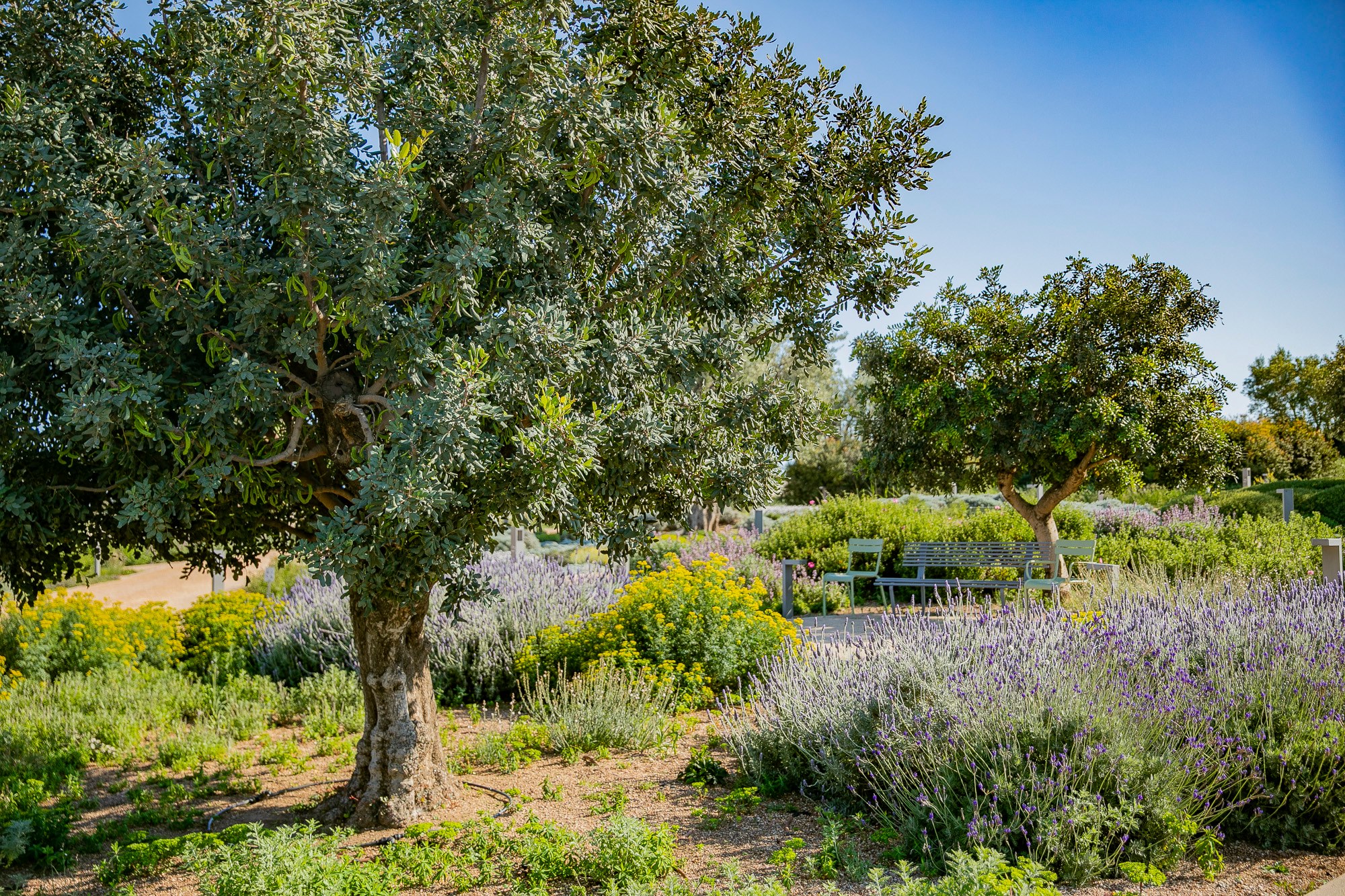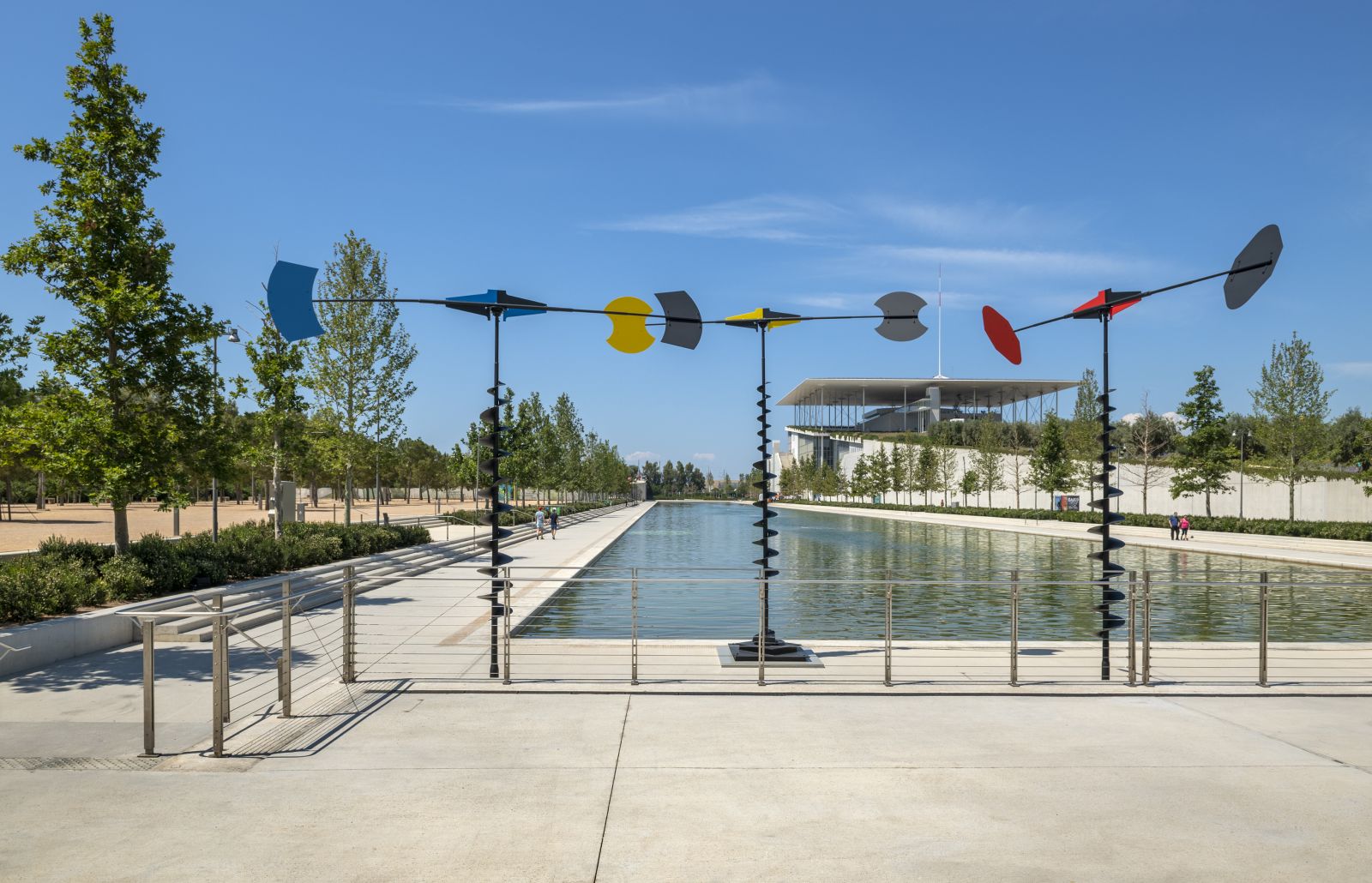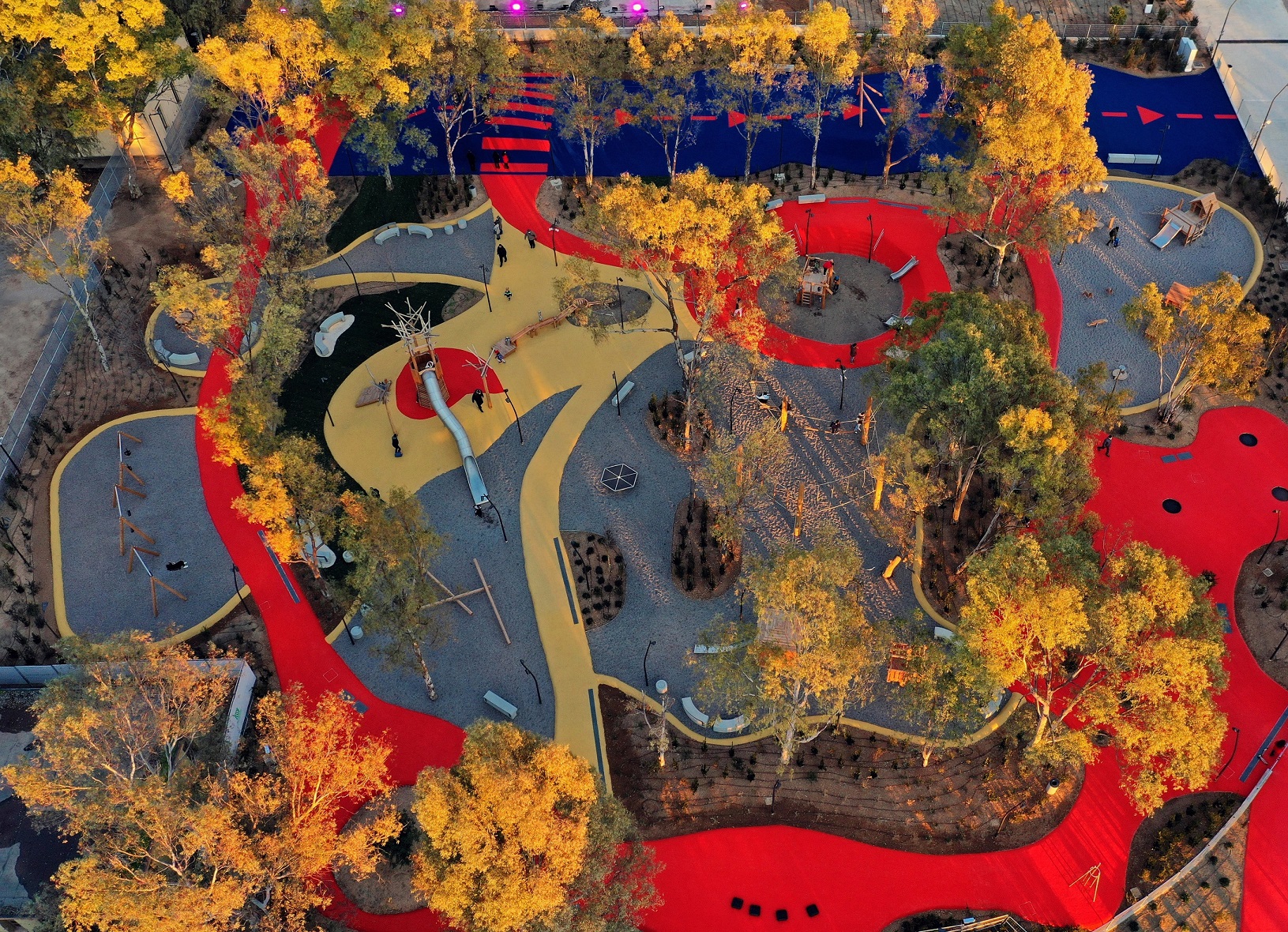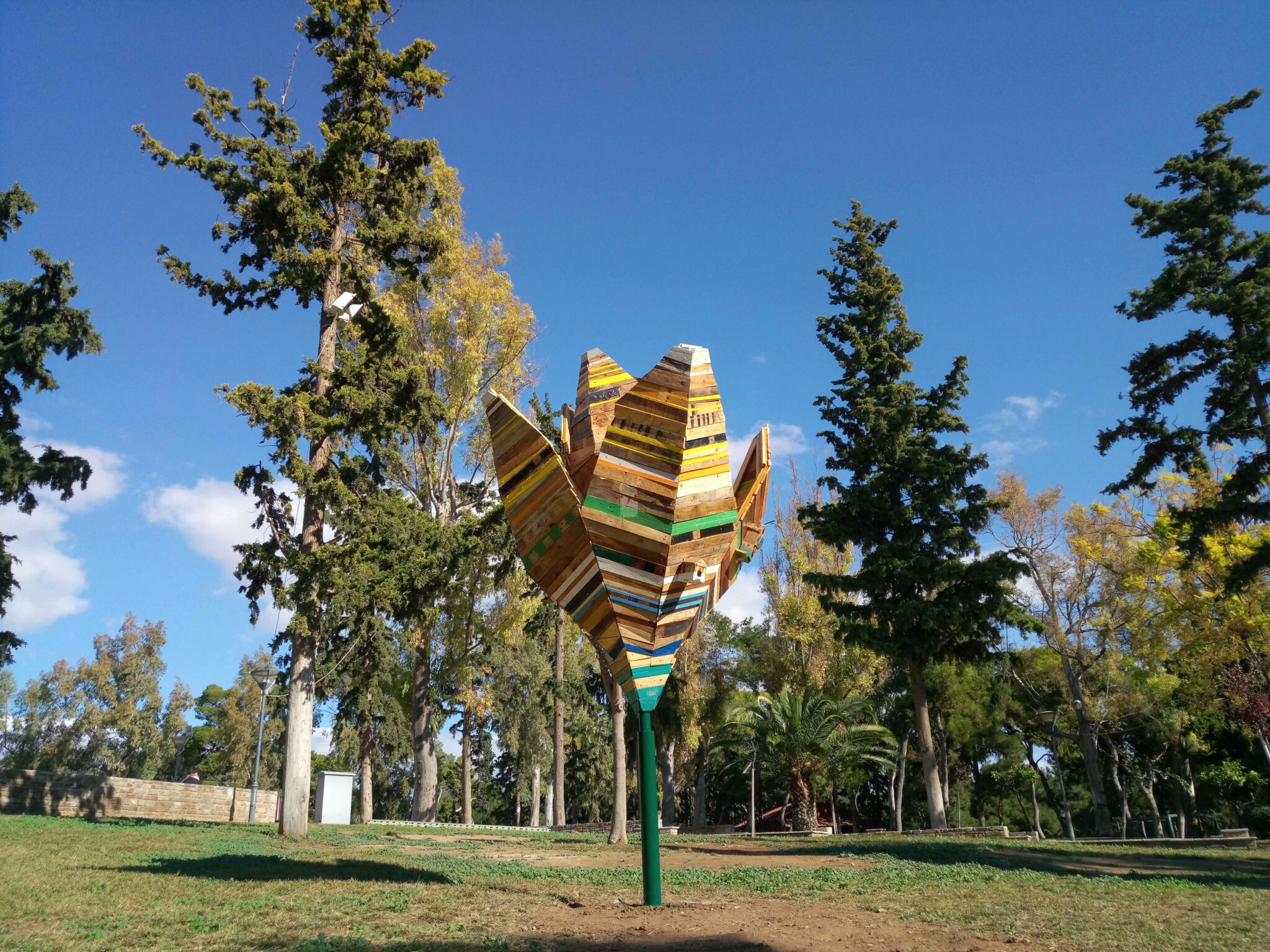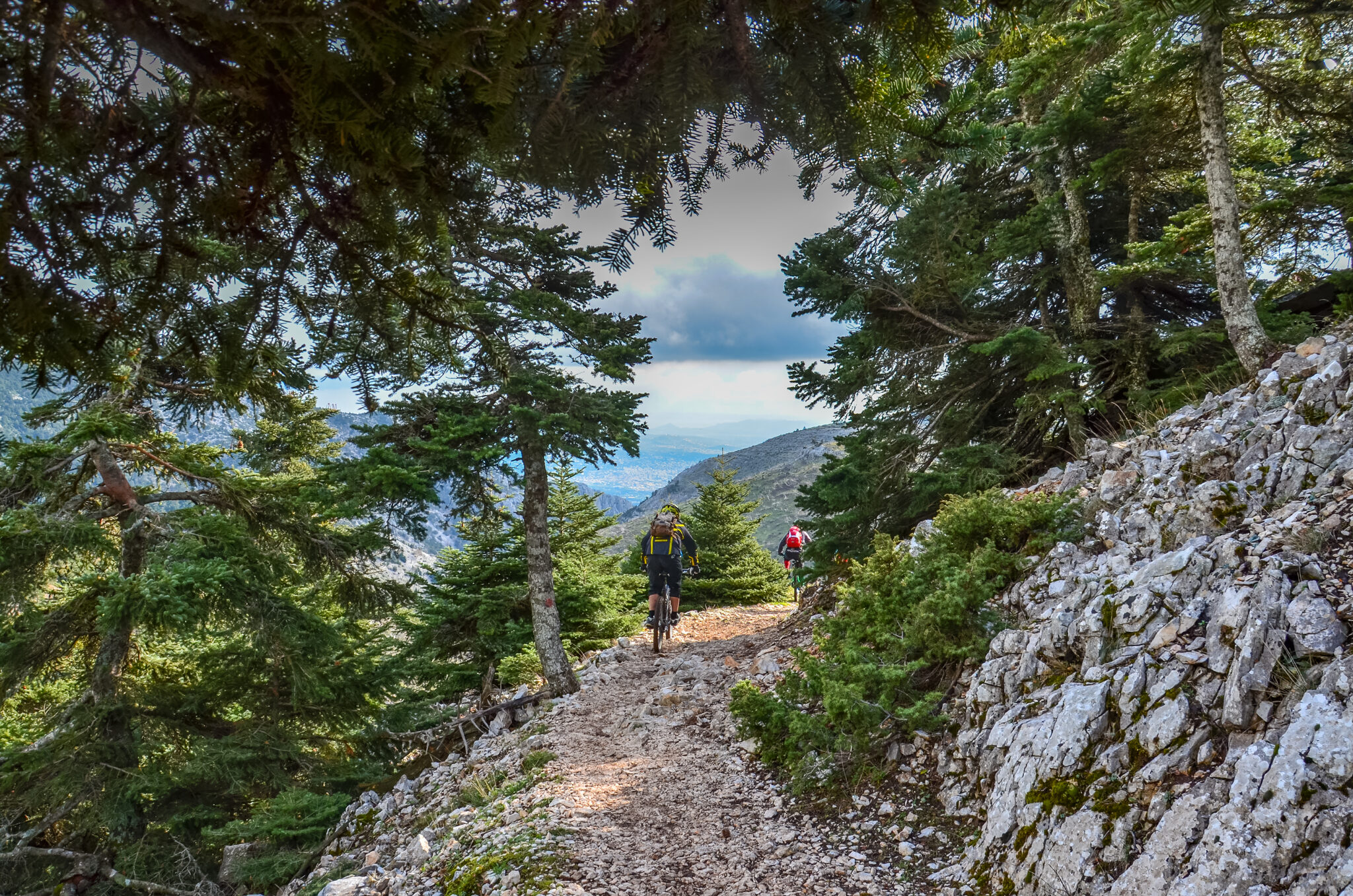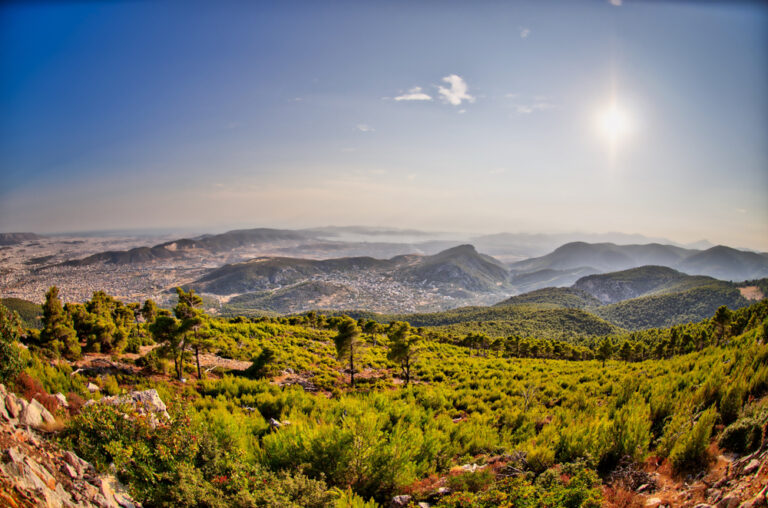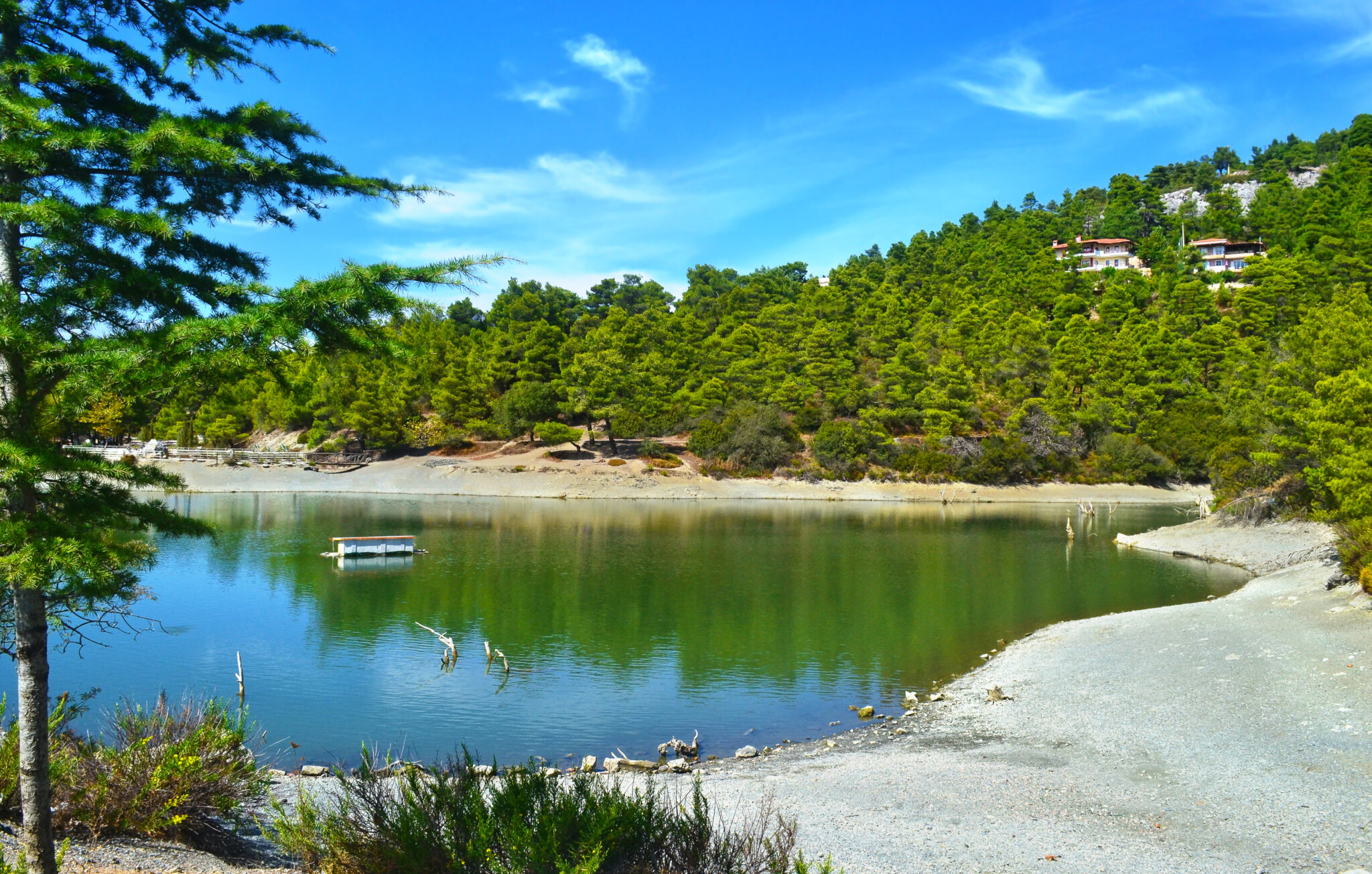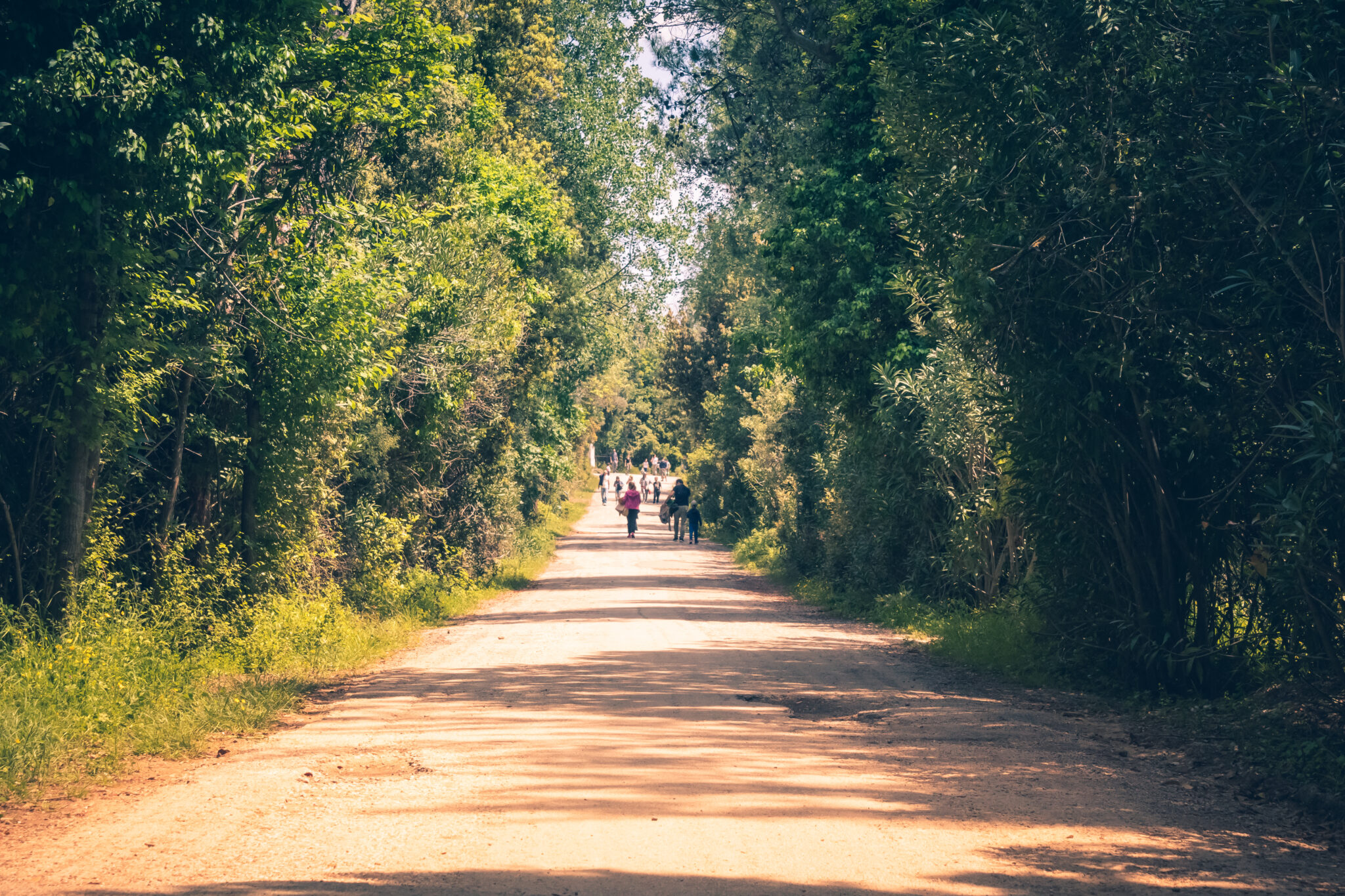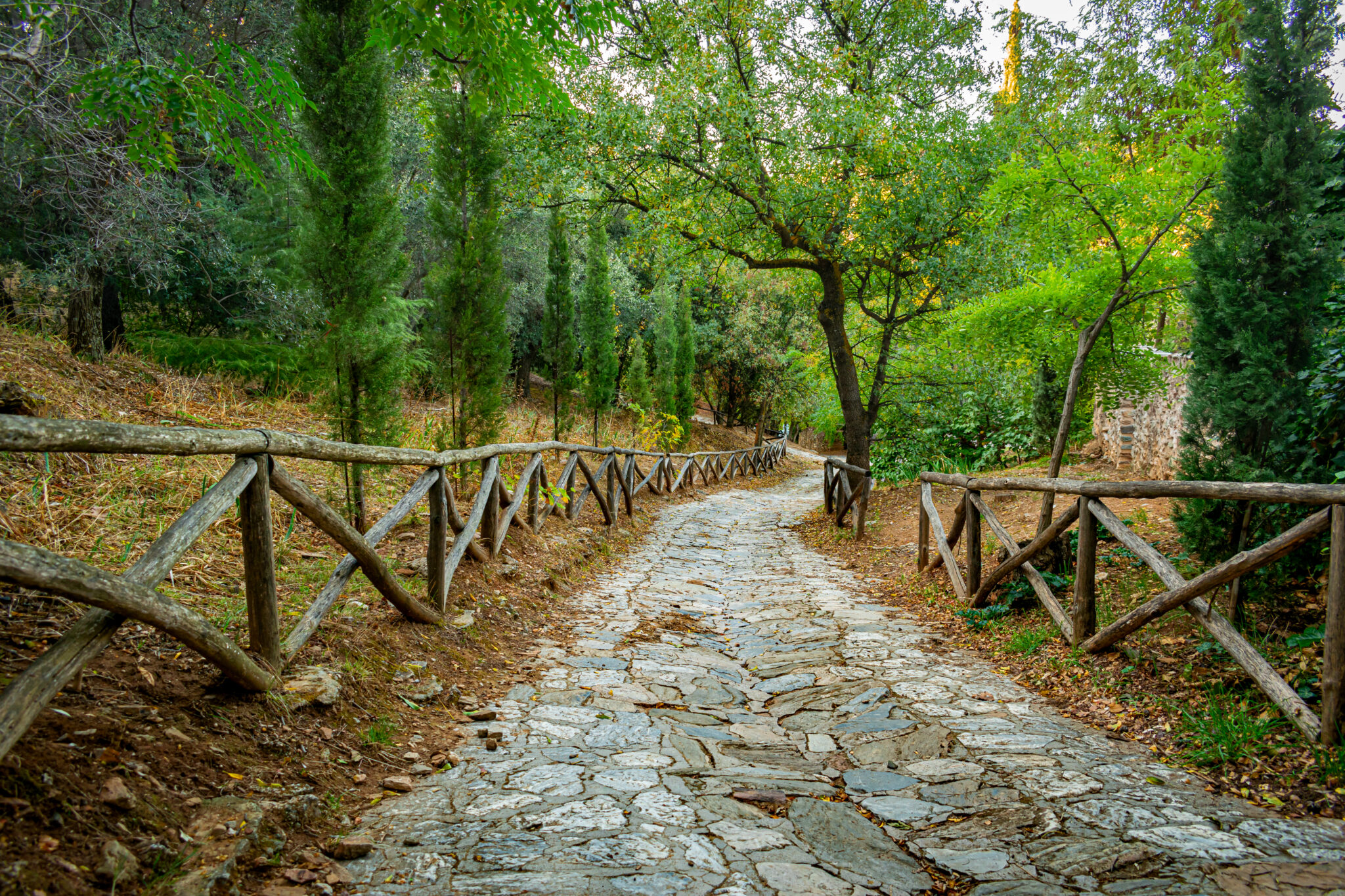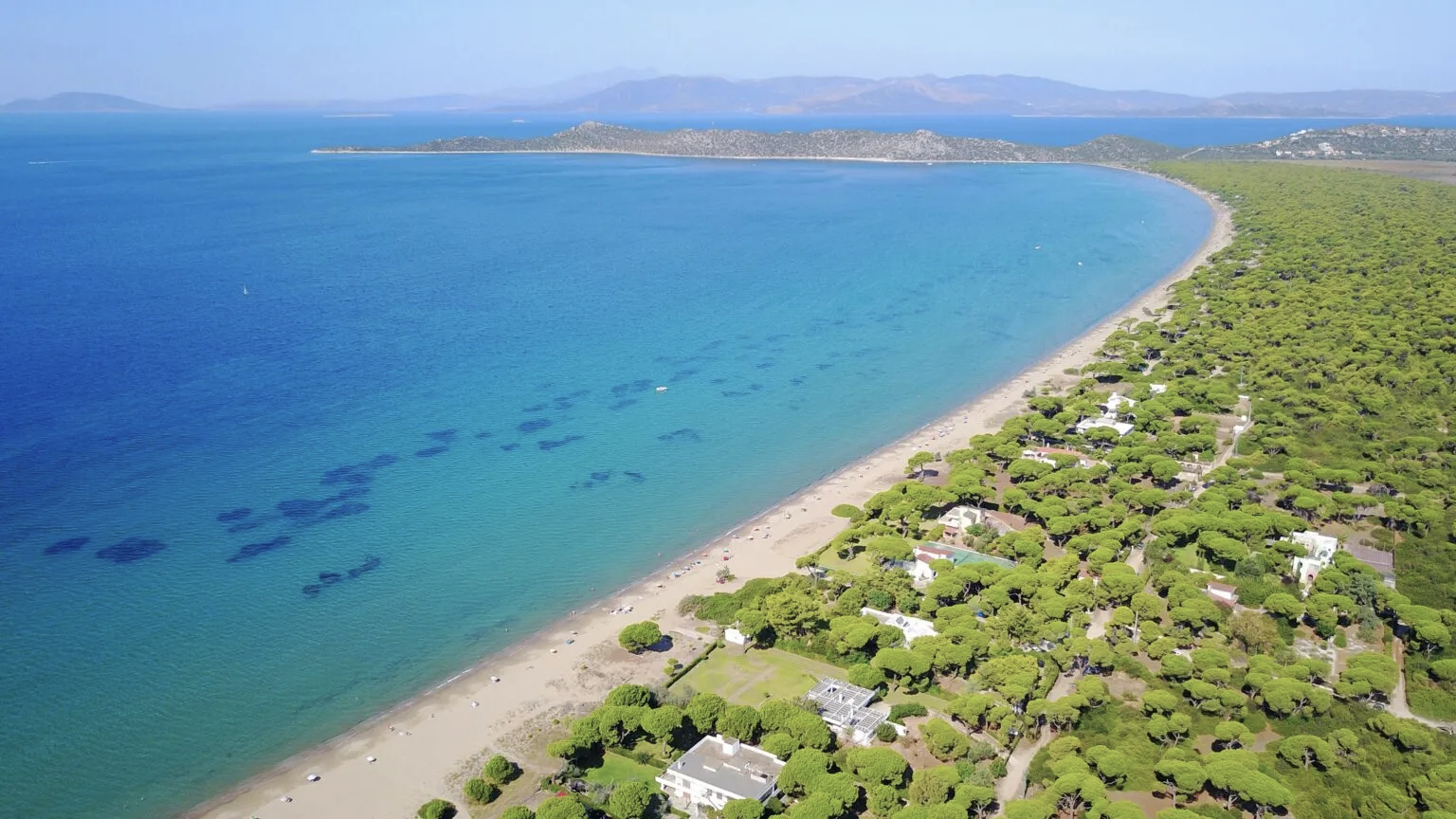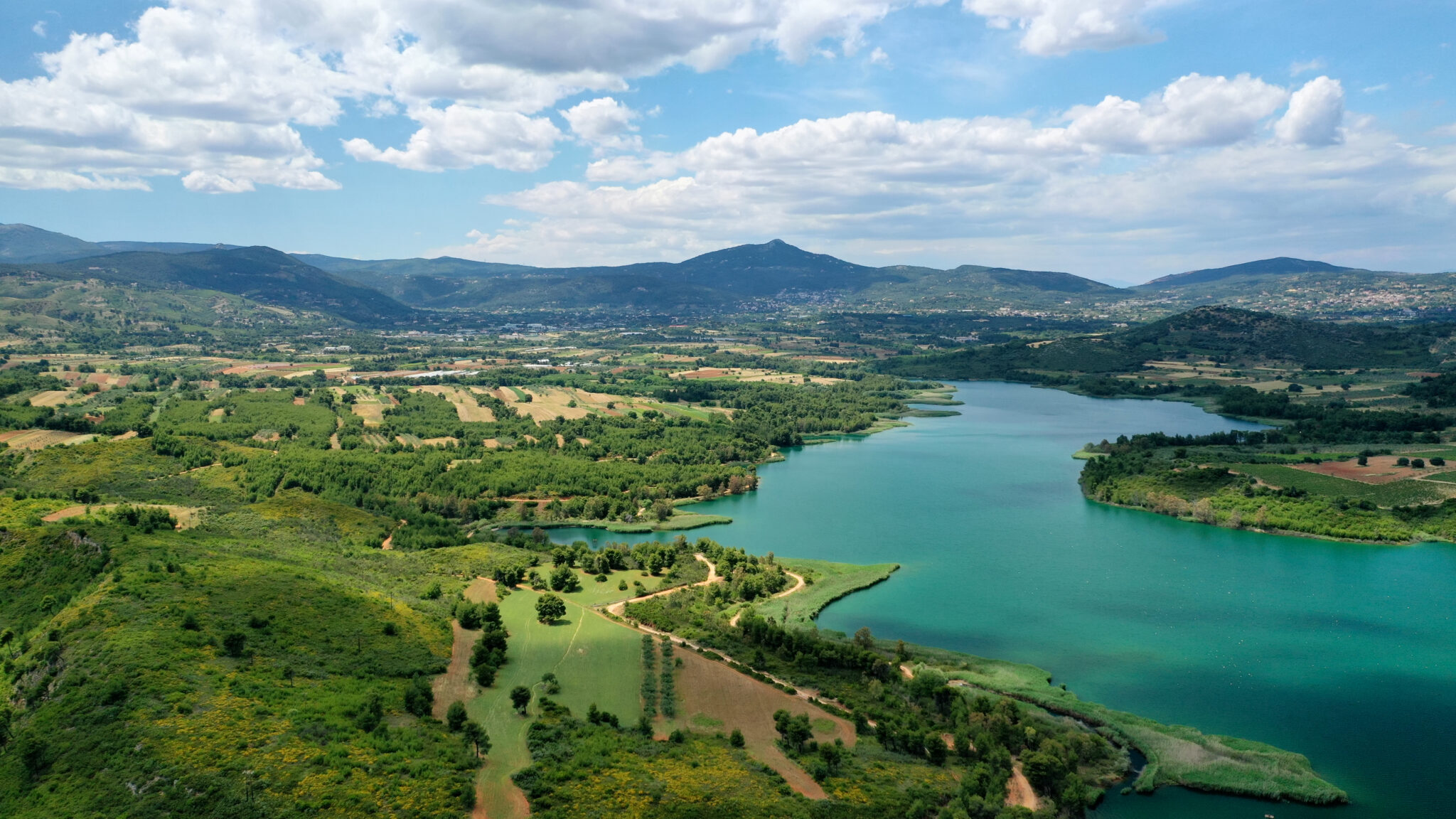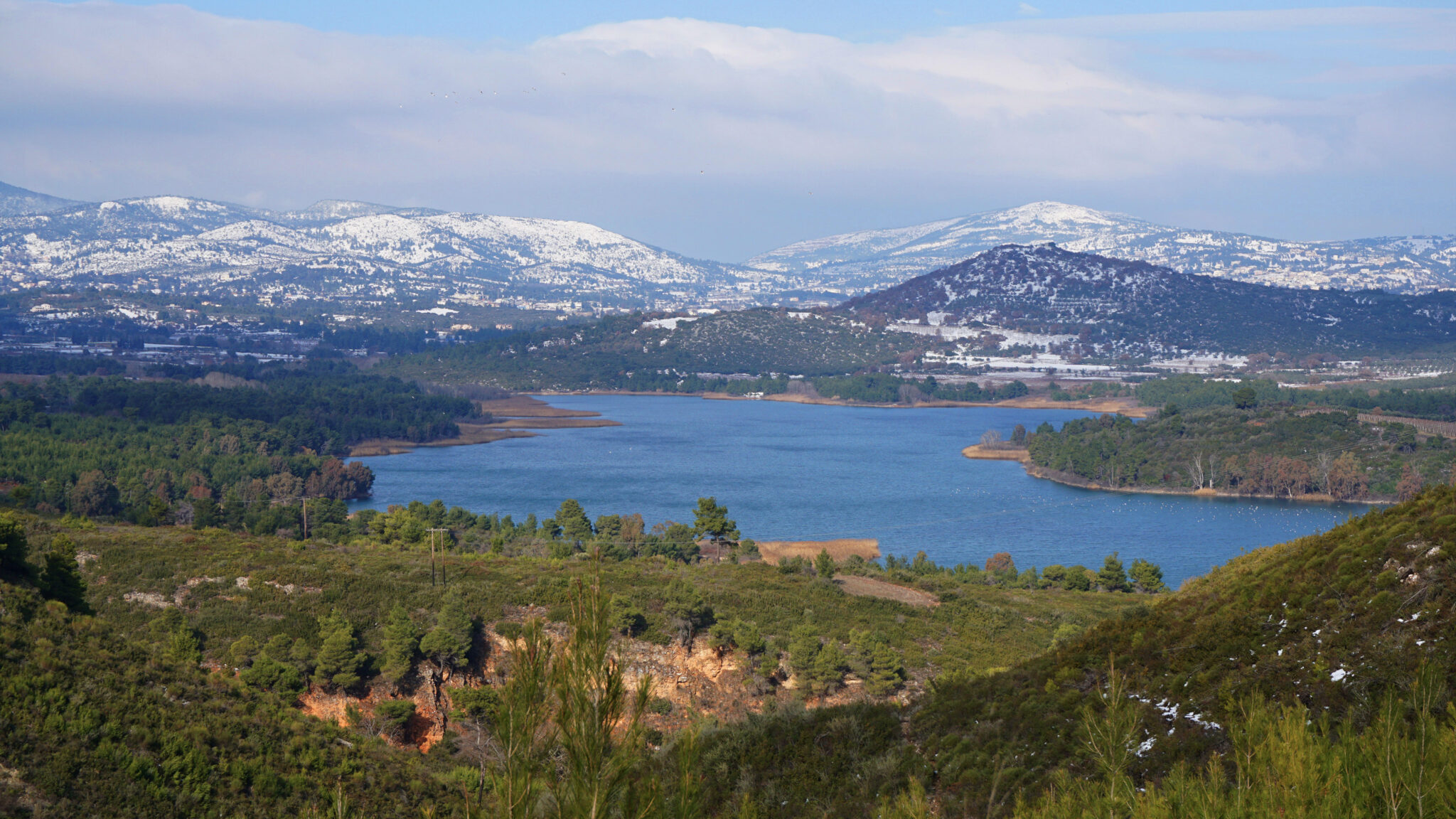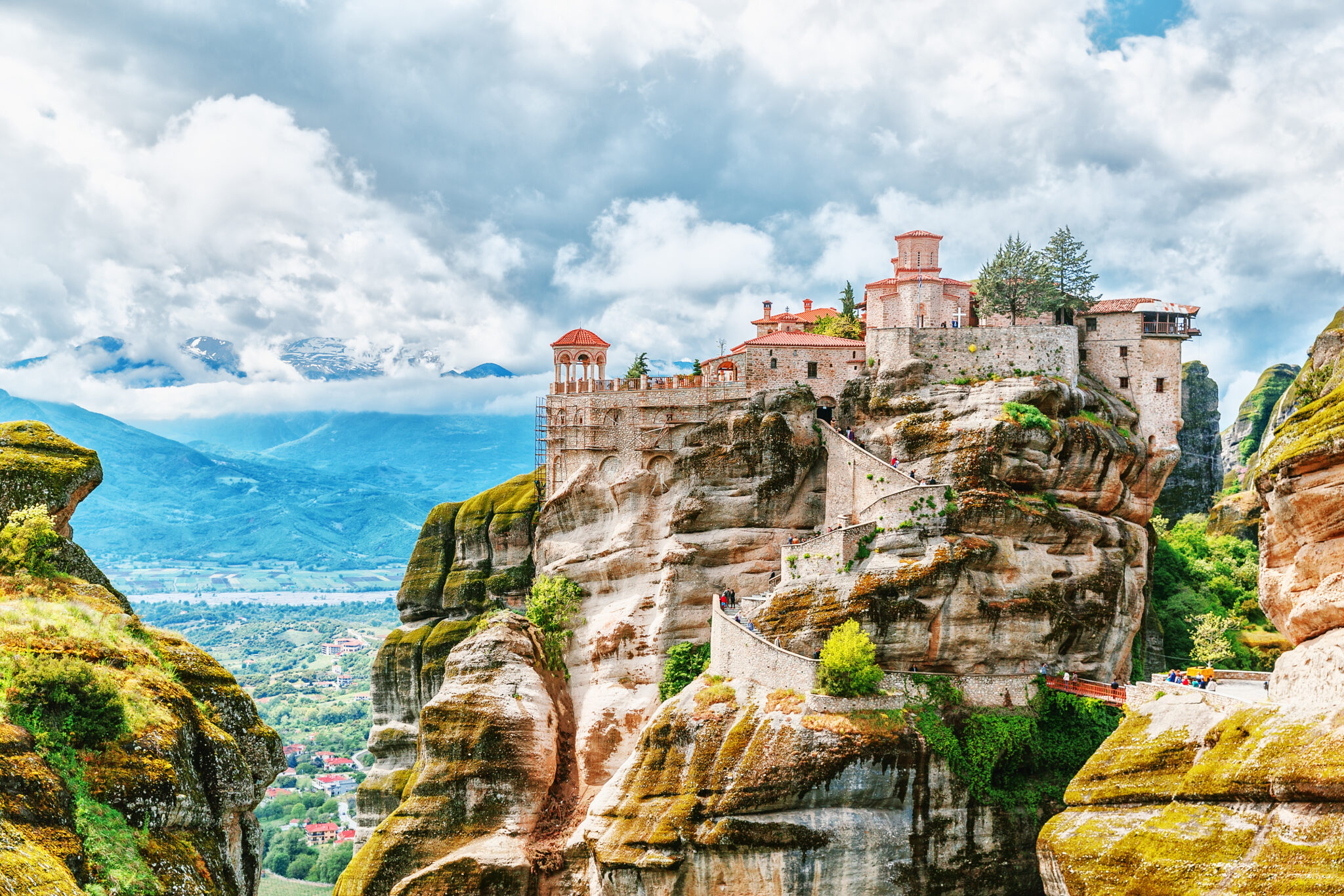It may not be one of the world’s greenest cities, but Athens certainly has its share of lush gardens, expansive parks and mini urban oases. Here we present a thorough guide on all the places around the capital where you can get your dose of green, something that as the ancients knew, offers inner peace, mental clarity and a chance to get away from the more agitated rhythm of the day.
From the lush and shady National Garden in Syntagma, to rugged trails and stunning panoramic views along mountains that embrace the city, we offer you plenty of refreshing ideas for regenerating in natural environments, some with a rich and admirable diversity of flora because after all, you can rest assured that in Athens it’s easy being green.
Get a quick overview of the green spaces in Athens with the map below. Enjoy!
Downtown
National Garden
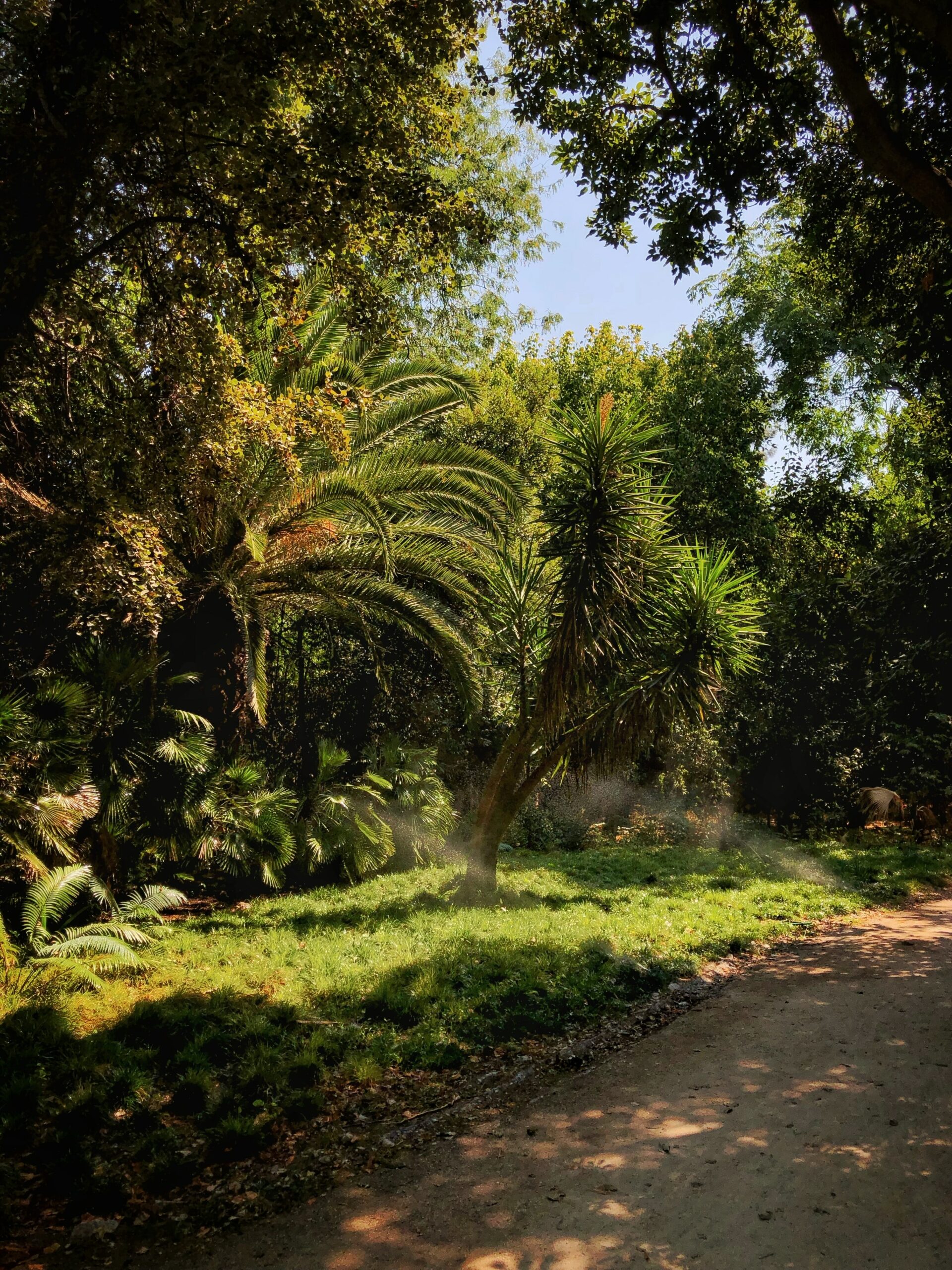
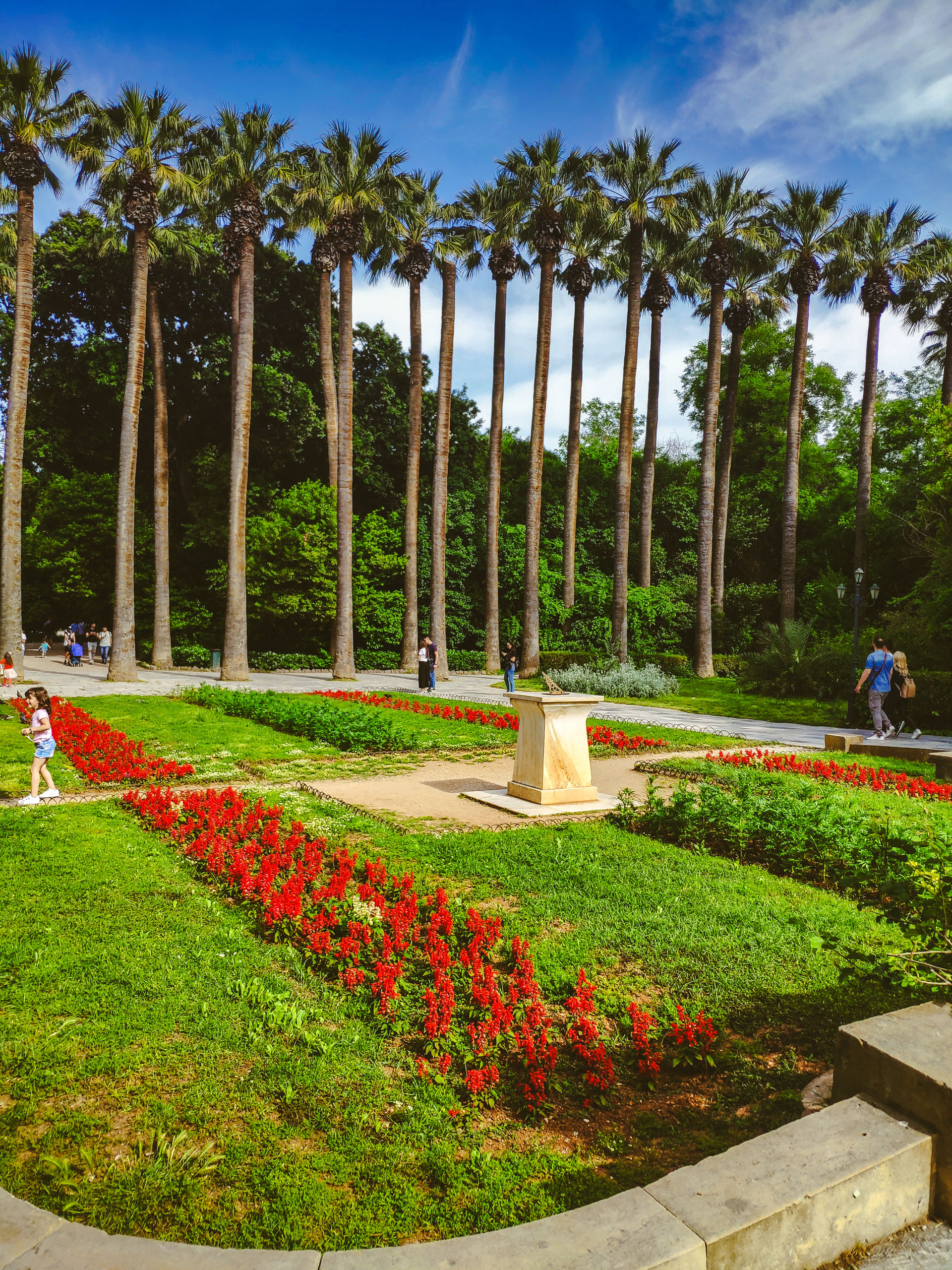
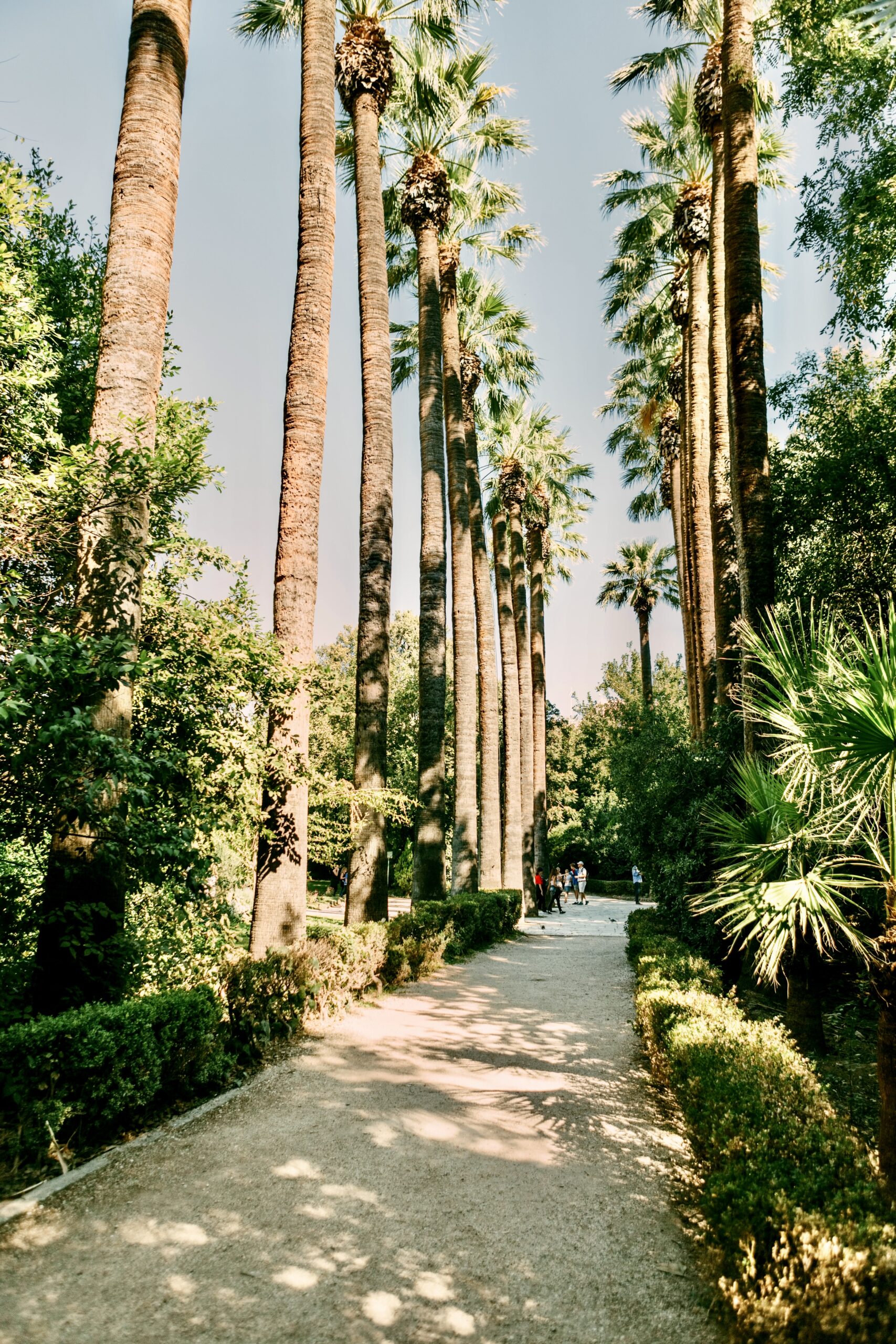
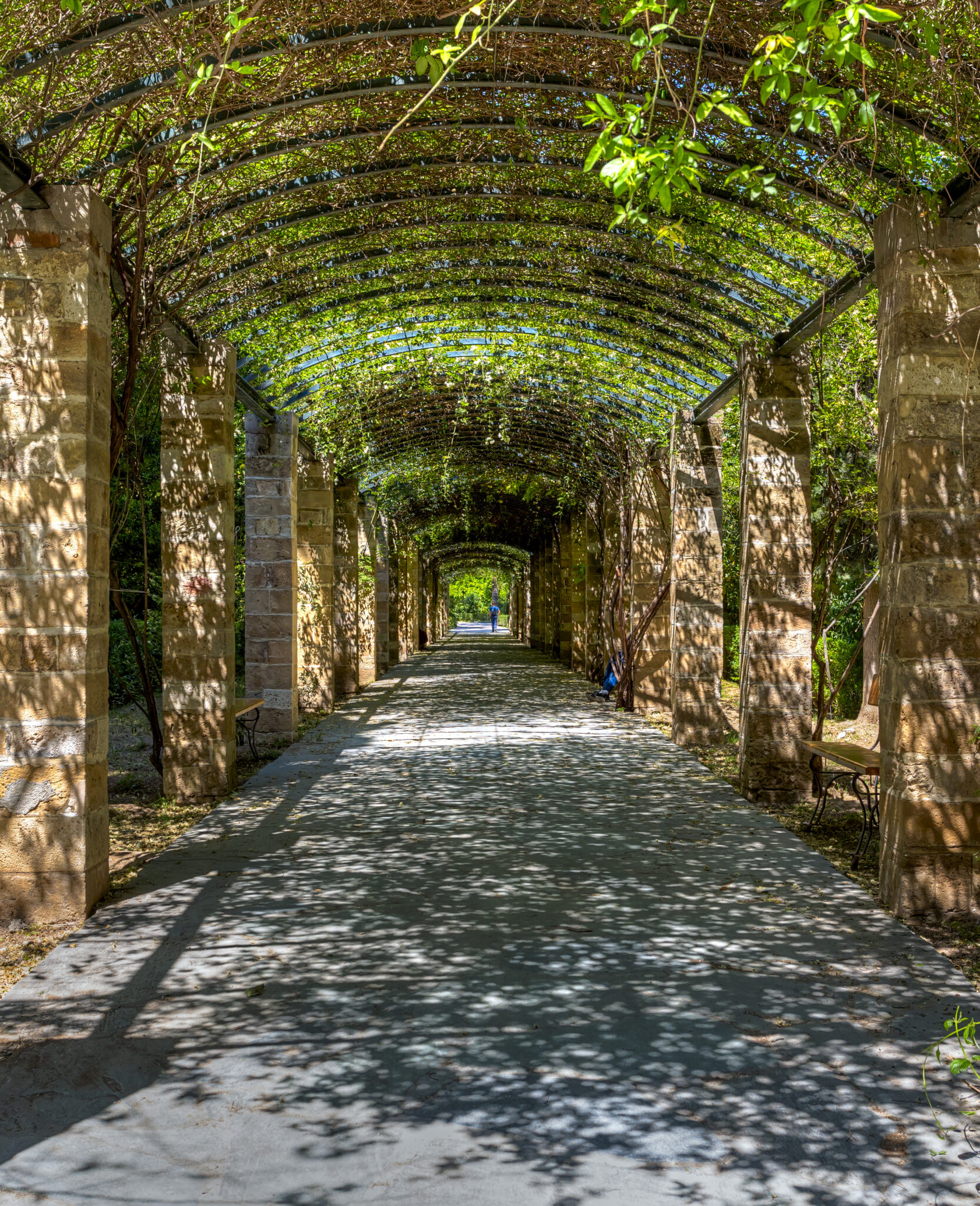
Situated in the heart of Athens and measuring 154,000 square meters, the National Garden (‘Ethnikos Kipos’ in Greek) emerged as modern Greece’s first organized park. Its development began in 1839, initiated by Queen Amalia, whose home was the Royal Palace (now the Greek Parliament Building). Approximately 15,000 ornamental plants were transported from Milan, other parts of Europe and north Africa, along with native plants, for the garden’s development, initially designed as part of the surrounding area of the palace.
The National Garden is an ideal place for a short or long break from the city’s frenetic pace. Besides taking a stroll along some of the garden’s shady paths, visitors can also marvel at the hundreds of trees and plants, relax by the pond with ducks and swans, and visit the small zoo with ibex, peacocks and rabbits. The Roman mosaic floor, at the garden’s Vas. Sofias avenue end, and the sundial with gigantic and impressive Washingtonia palm trees behind it, by the Vasilissis Amalias Ave entrance, are other highlights. Scatterings of ancient marble pieces and statues add to its charm.
Entrances: Vasilissis Amalias Ave, two entrances at Akakion Street (behind the Zappeion building), two entrances at Irodou Attikou St (one near the garden cafe, the other opposite the Presidential Mansion). The entrance from Vas. Sofia Ave is currently closed due to projects in progress.
Zappeion
Built in 1888 and designed by Danish architect Theophilus Hansen, Zappeion Hall was the first building to be constructed specifically for the revival of the Olympic Games in the modern world. Named after its benefactor, Evangelos Zappas, the semi-circular neoclassical building with a Corinthian facade has played a versatile role, from hosting the Olympic fencing in 1896 to serving as an important venue for political and cultural events throughout Greek history and until the present day. The pretty and peaceful gardens that surround it, with a marble water fountain, are ideal for young kids or pets, include a playground and blend into the National Garden.
Lycabettus Hill
Known and loved for its fabulous panoramic views of the capital, the Acropolis and the sea, Lycabettus is ideal for activities such as jogging, yoga, dog walking, family strolls and romantic outings. It is crowned by the 18th-century whitewashed St George’s Church, which can be seen from the city centre, topped by the Greek flag, and the nearby Sky Bar.
Halfway up the hill, visitors can also enjoy a meal or a drink at the Prasini Tenda cafe-restaurant, with its sweeping views. Accessible on foot (around a 15-minute steep trek up) or by funicular (on Aristippou street, at the end of Loukianou, Ploutarchou and Marasli streets, which end in stairs, or Aristodimou street by car), it is also home to the open-air Lycabettus Theatre of the City of Athens, a recently renovated venue for summer concerts and events.
Filopappou Hill
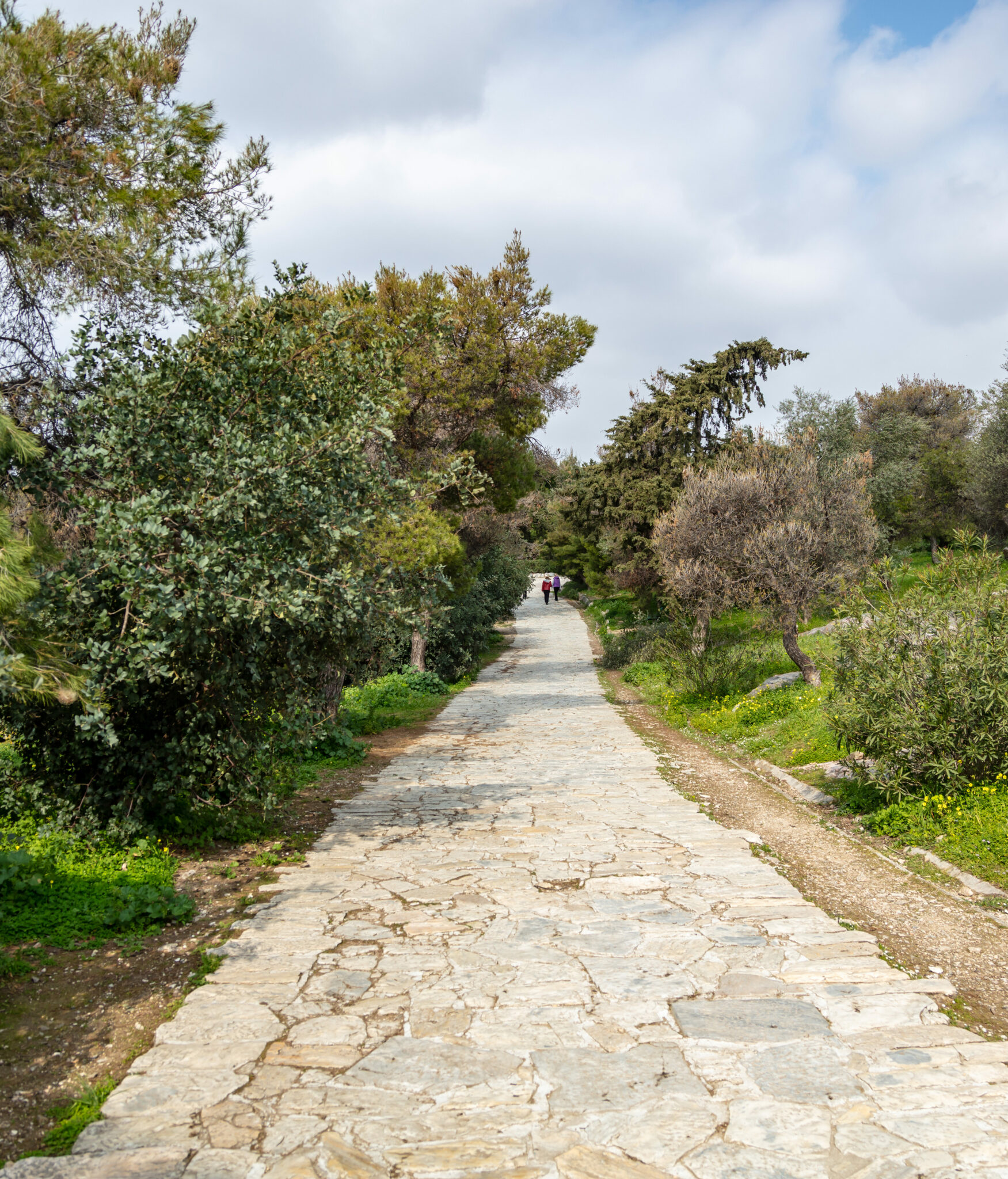
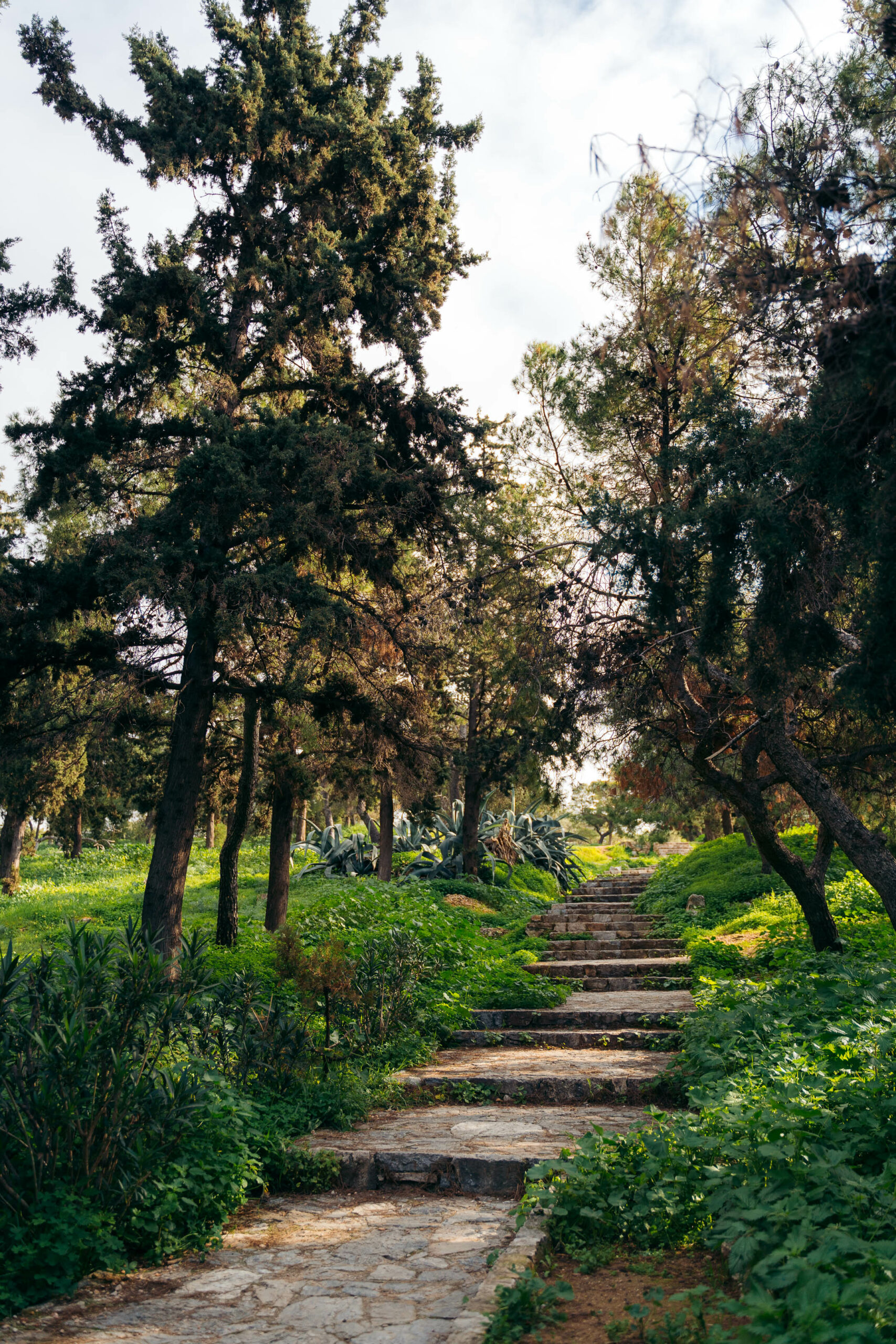
Located near the Acropolis (and reachable via a pedestrian road and park designed by architect Dimitris Pikionis that forks off Dyionissiou Aeropagitou street), the 147-metre-high Filopappou Hill is a wonderful place to enjoy panoramic views of the city as well as the chance to get a singular view of the Acropolis and Lycabettus Hill almost side by side, making it a popular destination for walks and hikes.
Notable attractions include the 16th-century church of Agios Dimitrios Loumbardiaris, with its frescoes and marble floors and made using different pieces of ancient ruins. The summit is marked by the monument to Julius Antiochus Philopappos, a second-century prince.
Pnyx
The Pnyx, which derives its name from the Greek “pyknos” meaning dense, was an open-air meeting place in ancient Athens with a capacity of about 15,000 men who in the 5th Century BC meeting place gathered there for the all-male assembly of Athenians, known as the Ekklesia. Prominent orators such as Aristides, Demosthenes, Pericles and Themistocles delivered speeches here, forging the process of Democratic thinking.
Situated between Filopappou Hill and Nymphs’ Hill, one of its notable features is a large niche in the eastern rock wall near the speakers’ platform, thought to contain a statue of Zeus Hypsistos and smaller votive offerings.
Byzantine Museum Garden
Sprawling behind the palace of the Duchess of Plaisance, now the Byzantine and Christian Museum, this one-hectare park rich in fruit trees, herbs and an abundance of shrubs, lies along the historic path of the ancient Ilissos River. Under-recognised, especially considering its enchanting natural landscape and open-air exhibitions, this park remains a welcome oasis in the urban landscape.
Alsos Ilisiou (Ilisia Park)
Alsos Ilisiou, just a 10-minute walk from Evangelismos metro station, covers an area of approximately 60 hectares. Geographically, it lies to the southeast of the Acropolis and near the Panathenaic Stadium. It can be entered from Iona Dragoumi Street, next to the courtyard of Agios Charalambos Ilisia Church, for a scenic walk among pine and cypress trees, and a playground.
Rizari Park
Located close to the Athens War Museum and where you’ll find the entrances to Evangelismos metro station, the park is rich with Mediterranean flora and is a legacy from 1844. It honours Georgios Rizaris, a former member of the Filiki Eteria, (the key group in Greece’s fight for independence from the Ottoman Empire), who had envisioned a central city garden for the recreation of young people. The park has floor tiles with words from Samuel Beckett’s poem ‘Cascando’ (1936), chosen by David Harding: “If you do not love me, I shall not be loved / If I do not love you, I shall not love”.
Eleftherias Park
A hilly expanse near Megaron Mousikis metro station, this park is a popular green space in Athens overlooking Vas. Sophias Avenue. Despite the traffic below, it offers a verdant escape and is ideal for dog walkers and office workers on a break. The park is home to the Noah cafe-restaurant and next door to the gardens of the Athens Concert Hall, where summer music events are held, and where you’ll find the trendy bar-restaurant Fuga.
Ardittos Hill (& Agras Hill)
Ardittos Hill is named after the ancient hero Ardittis, who is historically linked to the city’s judicial system and according to legend, united the ten tribes of Athens. It was here that the members of the Supreme Court of Eliaea took an annual oath to judge fairly. The geographical importance of Ardittou is evidenced by its role in the construction of the original Panathenaic Stadium, which dates back to 339 BC under Lycurgus.
Next door on tiny Agras Hill stands a stone platform for a life-size ship used in the Great Panathinaic Festival, which celebrated Athena’s birthday with various competitions and rituals. The rich biodiversity, historical monuments and scenic beauty of these two hills make them wonderful getaways for walking and connecting with ancient history.
Strefi Hill
Also known as “Achesmos”, this is a small hill in the Exarcheia and Neapolis neighbourhoods, opposite Lycabettus Hill. Originally a quarry from the 1840s to the 1920s, it was first planted in 1926, mainly with pine trees and bequeathed to the Municipality of Athens by the Strefis family in 1963.
Today you will find steep stone paths, an open-air theatre, a playground with a statue of Zeus, a basketball court and a snack bar. This park is suitable for various activities including picnics, trekking, concerts and sports.
Aristotle’s Lyceum
The archaeological site of Aristotle’s Lyceum, located on Rigillis Street between the Sarogleio Mansion and the Athens Conservatory, is a significant historical landmark. Originally a prominent lyceum in ancient Athens, it was an educational centre outside the Diochares Gate, known for its lush surroundings. Discovered in 1996, the site is now a well-maintained area that combines archaeological remains with Mediterranean flora, offering visitors a chance for contemplation.
Moni Petraki
The official seat of the Holy Synod of the Orthodox Church of Greece, this small but significant site both spiritually and environmentally, is located on Gennadiou Street in Kolonaki and is open to the public daily.
The monastery’s immaculate garden displays a variety of Attica’s flora, including cypress, pine and palm trees, as well as numerous plants that offer an aromatic experience in early spring. Seated on a bench, with eyes open or closed, visitors can enjoy a sense of renewal and tranquility, just 200 metres from busy Vasilissis Sofias Avenue.
Pedion Areos
The 93-hectare ‘Ares Field’ was created in the 1930s to commemorate the heroes of the 1821 revolution.It is situated in the central part of the city, in the neighborhood of Kypseli, near Alexandras Avenue. This tranquil park, ideal for walking and jogging, has a rich variety of plane and olive trees and Mediterranean plants, with shaded benches, a playground, a cafe, churches and an amphitheatre. There are busts of revolutionaries and a memorial statue of Athena the Defender.
Plato’s Academy (Akadimia Platonos)
In 388 BC, on the sacred site of one of the city’s ancient gymnasiums for the training of athletes since the 6th century BC, Plato founded his famous philosophical academy. This modest open-air archaeological site offers the unique experience of walking in the footsteps of the father of Western philosophy. Explore the archaeological remains, enjoy the tranquil atmosphere of the park and visit the Plato’s Academy Digital Museum, which offers interactive exhibits about Plato’s life nearby on Monastiriou Street.
West
Diomedes Botanical Garden
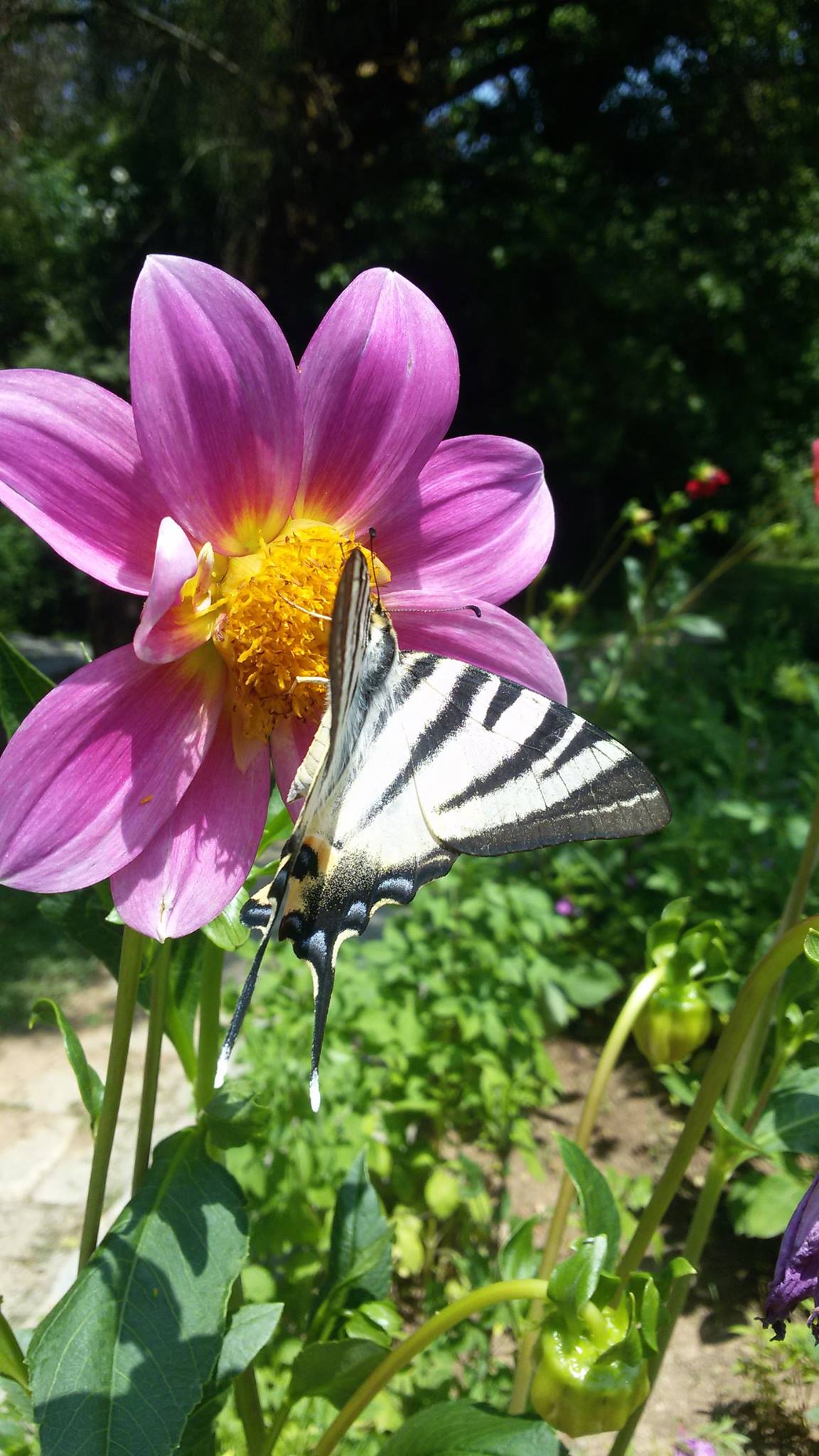
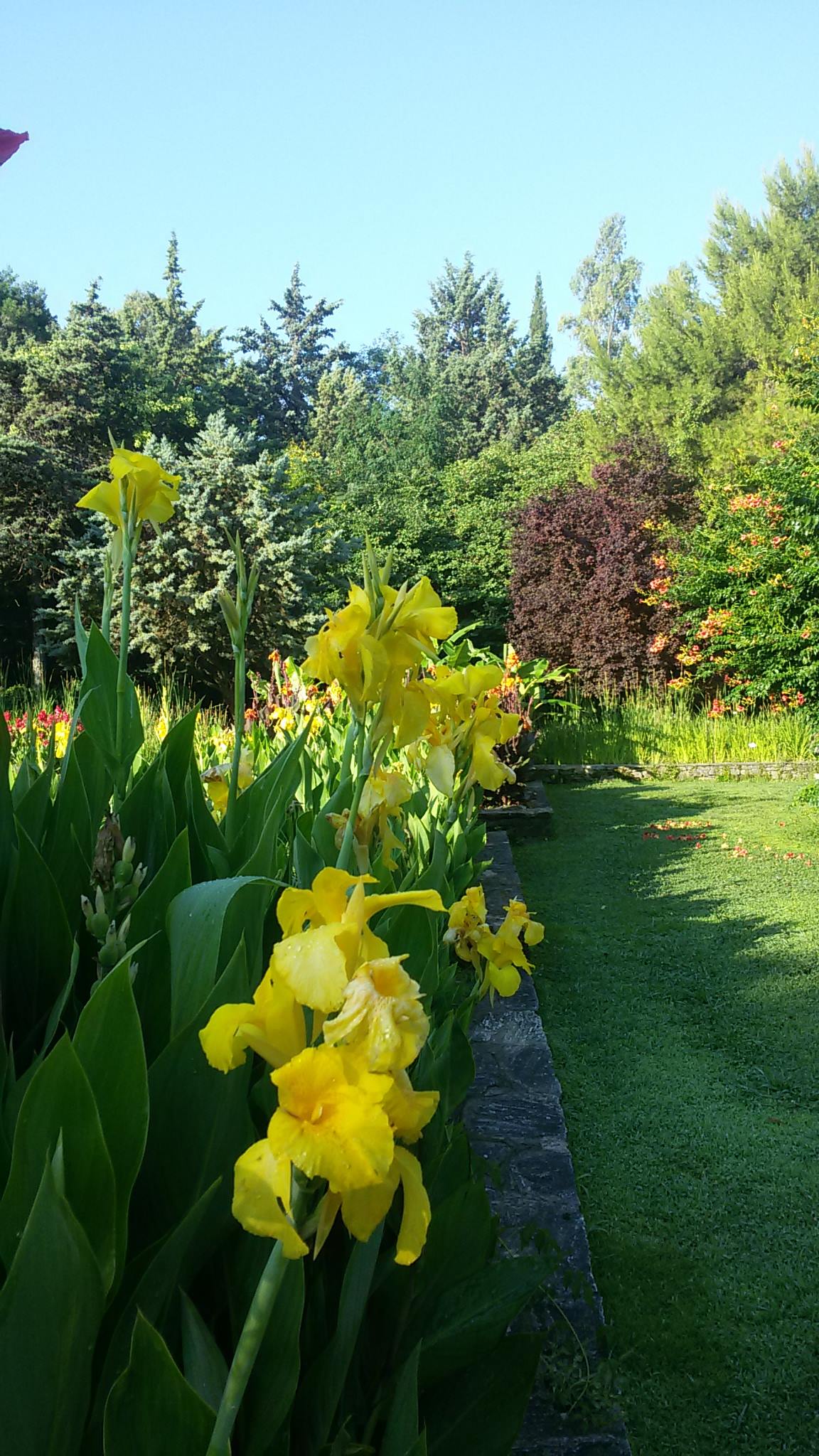
On the outskirts of Haidari at the end of Iera Odos, the Diomedes Botanical Garden is a remarkable but often overlooked natural retreat, that is today easier to reach thanks to the extension of the metro to Aghia Marina station.
Covering 186 hectares, this botanical haven boasts 4,000 species of endemic and exotic plants, with a network of 25 lakes and various water features, as well as more than 100 species of roses and numerous flower beds. Group and school tours can be booked here upon request, or you can simply visit independently.
Tritsis Park & Queen Amalia’s Tower (Pyrgos Vasilisis)
The largest metropolitan park in Athens, the Antonis Tritsis park, is located in the west suburbs of Attica, covering around 120 hectares, with water having a leading role. Six artificial lakes surrounded by verdant vegetation unite in a large artificial channel that ensures the constant flow of water between the lakes and also the recycling of the waters. At the same time, the park’s rich flora and fauna make it a unique destination that will make you feel as if you were in the heart of a wild, natural landscape, outside the city borders. Thousands fruit-bearing trees were planted on the farm, 3,700 mulberries, hectares of pistachio trees, around 18 hectares of vines, thousands of olive trees, rare varieties of ornamental plants from abroad. Large parts of the land were farmed, growing cotton, corn, clover, oats, briza, potatoes, broad beans, beans.
The area surrounding Tritsis Park has a long history from 1833, just a few years after the Greek Independence (1821). At that time, many Turkish estates in Attica were bought by wealthy Greek and foreign landowners, including Ioannis Papatheodorou Lefakis from Andros. The Lefakis estate, around 30 hectares, was in the Dragoumanos neighbourhood, at today’s location Pyrgos Vasilissis (Queen’s Tower). The latters was the former summer residence of Queen Amalia of Greece, with stables, gardens and a winery.
Nea Philadelphia Park
Located in the western suburbs, this park along Dekelias Avenue is a popular meeting place for locals throughout the day. On weekends, especially in summer, it is a hive of activity as groups and families meet, play or have a drink before heading to the open-air cinema. The park offers safe cycle and skate paths for children and a designated dog park for four-legged companions.
North
Kifissia Park
Located in Kifissia, this charming park has been a delightful stop for locals and visitors alike since its inauguration in 1885, when the Attica Railway extended its HSAP electric railway line (green) to Kifissia. Although there’s no playground, the park has two picturesque ponds with goldfish. At Christmas, the park comes alive with exciting rides, games and stalls and at the beginning of May it hosts the annual flower show.
Syngrou Park
In the northern suburbs of Attica, very close to Kifissia, this is one of the few large green spaces you’ll find so close to the center of Athens, offering a wide range of activities for the whole family. The Syngrou Estate (also known as Syngrou Forest and Syngrou Park) is a gorgeous, wooded area ideal for a stroll in nature without having to drive far without crowds. A stop at the small ancient theatre that’s located within the forest is a must, as well as at the two lakes where you’ll see gorgeous goldfish in various colours. Finally, for the honey lovers, the Beekeeping Museum is very interesting, since it the only museum in Greece with such rare beehives from all over Greece.
To reach Syngrou Park head towards Kifissia on Kifissias avenue and when you reach the KAT hospital, cross the park’s main gate. There is free parking available, while the park is open to the public from early in the morning until sunset, as there is no lighting to allow strolls during the night.
Veikou Park (Alsos Veikou)
This park spans 104 hectares, inviting visitors to delight in its natural allure and engage in various activities. It is perfect for sports enthusiasts, featuring facilities like a soccer field, basketball and tennis courts, a running track, and a bike path. It also includes a 4.7-km loop trail ideal for hiking, running, and walking, especially in warmer months.
East
Papagou Park
The enduring popularity of this park is no surprise, with attractions including a dog park, a large playground, a pond, an impressive fountain and statues of Greek revolutionaries placed throughout. It also has an amphitheatre for musical and theatrical performances, and a popular bar-cafe called Piu Verde. It is a 10-minute walk from Ethniki Amyna metro station.
South
Stavros Niarchos Cultural Centre Park
Opened in 2015, the modern Stavros Niarchos Park offers a reviving escape from the city. Accessible by tram or free shuttle service from Syntagma, it offers visitors the refreshing sea air and a range of daily activities (see the events page on the SNFCC website) including free yoga, art and other classes for adults and kids, outdoor film screenings and cultural performances. This 20-hectare park features lush greenery, a vegetable garden and amenities such as playgrounds, a sports field, a jogging track and a giant chessboard.
The Ellinikon
Europe’s largest coastal park, just off the Athens Riviera, is a relaxing place for strolls, outdoor gatherings and children’s activities. The park features fountains and a lush landscape with 55,000 plants and 500 trees, making it perfect for morning walks and evening chilling. The playground is inspired by the history of civil aviation, with wooden climbing frames and colourful rides. With over 70,000 square metres of space, it’s also great for running, cycling or outdoor yoga.
Nea Smyrni Park
Covering five hectares, Nea Smyrni Park is a green oasis in the heart of the city. Established in the 1920s, it is one of the largest parks in the Attica region, with various species of trees and dense greenery. Situated between central roads, it’s easily accessible. The park has a lively children’s playground and hosts occasional summer events, making it a popular urban retreat. It’s an ideal place for jogging, with well-maintained paths and has a large area dedicated to pigeons. Although there are no sports facilities, the park has walking and cycling paths.
Outskirts
Mt Parnitha
Explore Parnitha, a sprawling nature reserve just outside the city that is popular among fitness enthusiasts and nature lovers alike, especially at weekends. Despite a devastating fire in 2007, Parnitha’s 30,000 hectares are home to a wide variety of wildlife.
Start your adventure at the Bafi or Flabouri Refuges, which offer packages for groups of two or more. Join mountain bikers, dedicated runners, speed walkers and even rock climbers. Keep an eye out for the mountain’s red deer, Cervus elaphus, or the majestic golden eagle soaring above. If you’re feeling adventurous visit the mysterious Pan’s Cave.
Lake Beletsi
Located on the eastern slope of mount Parnitha, at an altitude of about 600 m, a beautiful, secret place will satisfy even the most demanding people in search of a short break near Athens. Lake Beletsi, also known as Lake Kithara (guitar in Greek) due to its shape, is on the borders of the Ippokratios Politia quarter, and is ideal for a lovely stroll in nature, offering moments of pure calm and peace. To get there all you have to do is to go on the Athens-Lamia national road and turn left at the Afidnes Junction. After you cross Agia Triadas street, through the quarter, you’ll have arrived to your magical destination. If you’re feeling the need to completely decompress from your daily routine, just take your book and sit on the lake’s banks, looking at the birds, the geese and the swans in the lake. Or if you like cycling, here you’ll find beautiful paths to ride for hours.
There is a specially designed area for picnics, with tables and benches, but bring your supplies with you, since there aren’t any canteens in the area. You’ll also find organised playgrounds for endless playing near the artificial lake that was created between 1973 and 1975, as a water reserve for constructions in the area, and also as a future aquatic habitat.
Tatoi Royal Estate
Tatoi Estate, a stunning natural destination just 27 kilometres from the centre of town, graces the south-eastern slope of Mount Parnitha. Once a royal retreat and the summer home of the Greek royal family, it became state property in 1973 after the abolition of the monarchy.
This vast area is covered in a lush forest with Aleppo pine, oak, arbutus, olive, strawberry and plane trees. Outdoor enthusiasts flock here, especially on the weekend, to explore the 90 kilometres of unmarked trails. The highlight of the estate is Europe’s smallest summer palace, built in 1874. The Tatoi Estate is a great place to hike, cycle, jog and picnic.
Mt Ymmitos
Mt Ymmitos, a 20-minute drive from central Athens, offers nature lovers and outdoorsy folks a peaceful retreat in the crisp, fresh air. Its vibrant ecosystem is home to over 100 species of birds, while an extensive network of trails makes it ideal for running, hiking and mountain biking. A scenic 30-minute hike takes you to the Church of the Ascension for breathtaking views of the city. For quick access from the city center, take bus no. 224, or a 20-minute taxi ride away.
In Greek it is described as the Ymittos ‘balcony” due to its unique view of the whole of Athens. It’s a beautiful mix of nature and culture, with ancient ruins and the 11th-century Kaisariani Monastery, a great example of the lovely Byzantine architecture built in the end of the 11th century and dedicated to the Entry of the Most Holy Theotokos into the Temple (it stopped operating in 1833). Green stretches, wooden bridges, running water, and gorgeous nature welcome visitors who arrive from all over Attica to feel the joy of a short, fun, “excursion” just outside of Athens.
Schinias National Park
On the Marathon valley, about 40 km from Athens, you’ll meet the most important coastal ecosystem in the whole of Attica, a place with a fragile aquatic balance that will engage children and make them interested in the environment, igniting a love for the land’s flora and fauna.
Stretching 138,400 hectares (including the sea area) the Schinias national park consists of the forest of Koukounaria (one of the few remaining in Greece), the Mega Elos, the Kinosura peninsula (a Mediterranean ecosystem of great natural beauty with shrubs and grass), the coastal and the marine zone. Here you can enjoy the magic of a large wetland that attracts thousands of visitors each year, and is great for rare birdwatching, and for relaxing in nature.
Marathon Lake
The area around the Marathon Lake is historically known due to the Battle of Marathon, while you can also see the location of the Persian army camp, as well as the Monument (trophy) of the Battle that was built near Mega Elos. Researchers believe that that is the location where the Greek armies gathered before the fight. Some claim that the monument was erected as a symbol of the Athenians’ victory, while others that it is the site of the mass tomb of thousands of Persians who fell in battle.
The park is part of the Natura 2000 network and hosts 19 habitats, 115 bird species, while endangered freshwater fish, amphibians and reptiles live in its waters. Make sure you stop at Makaria Pigi, the spring between the two lakes. Eels, turtles and the endangered endemic fish Pseudophoxinus stymphalicus marathonicus can be found there. Admire the wetlands with the fresh, brackish and saltwater surrounded by reeds, tamarisk trees and lush vegetation and wet valleys. Rare fowl nest in the area, while in the lowest part, in lake Stomi, you can also see many endangered aquatic birds like Phoenicopterus ruber, Falco naumanni and Himantopus himantopus. A truly educational, valuable experience for young and old a stone’s throw from Athens.



